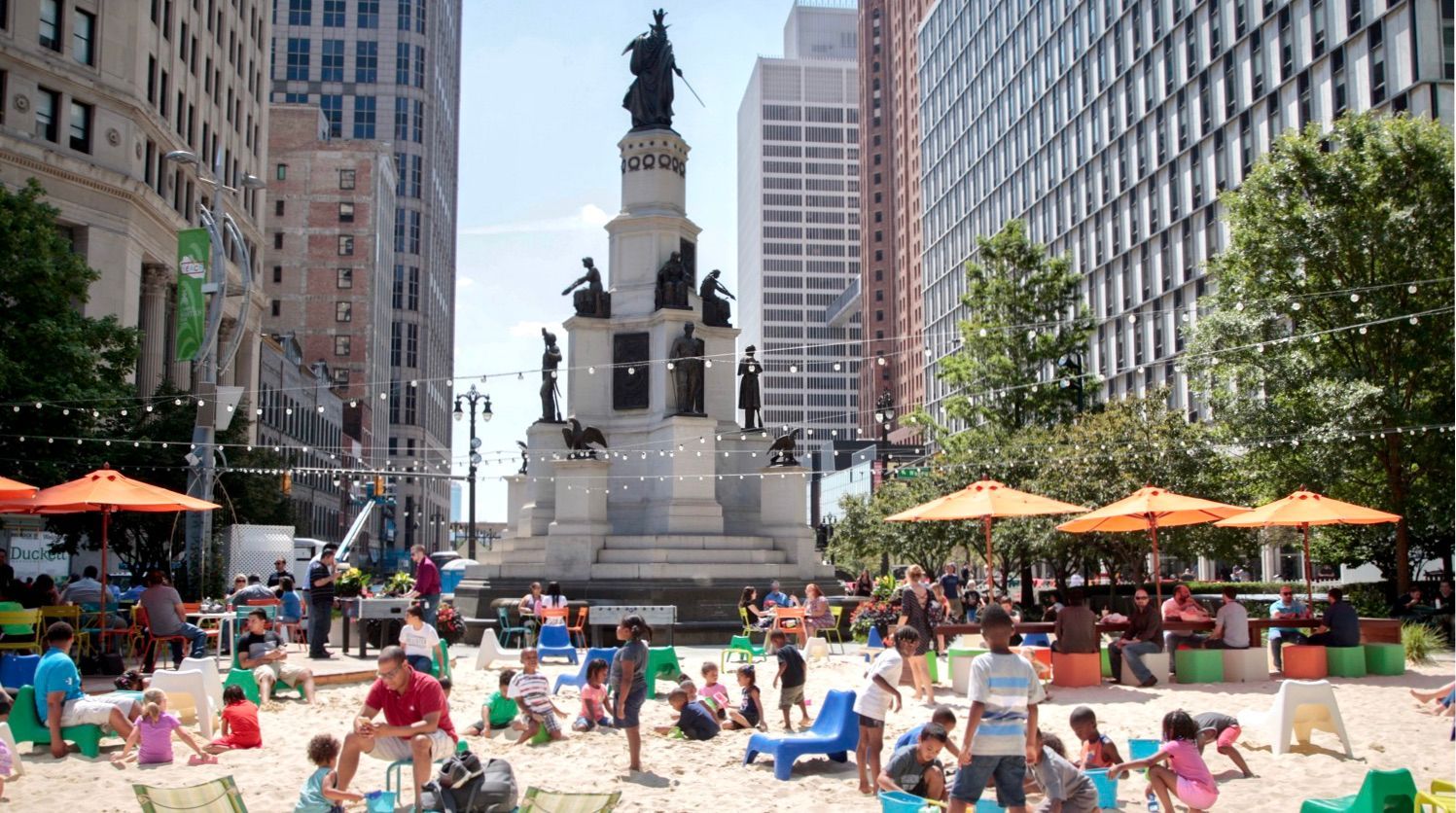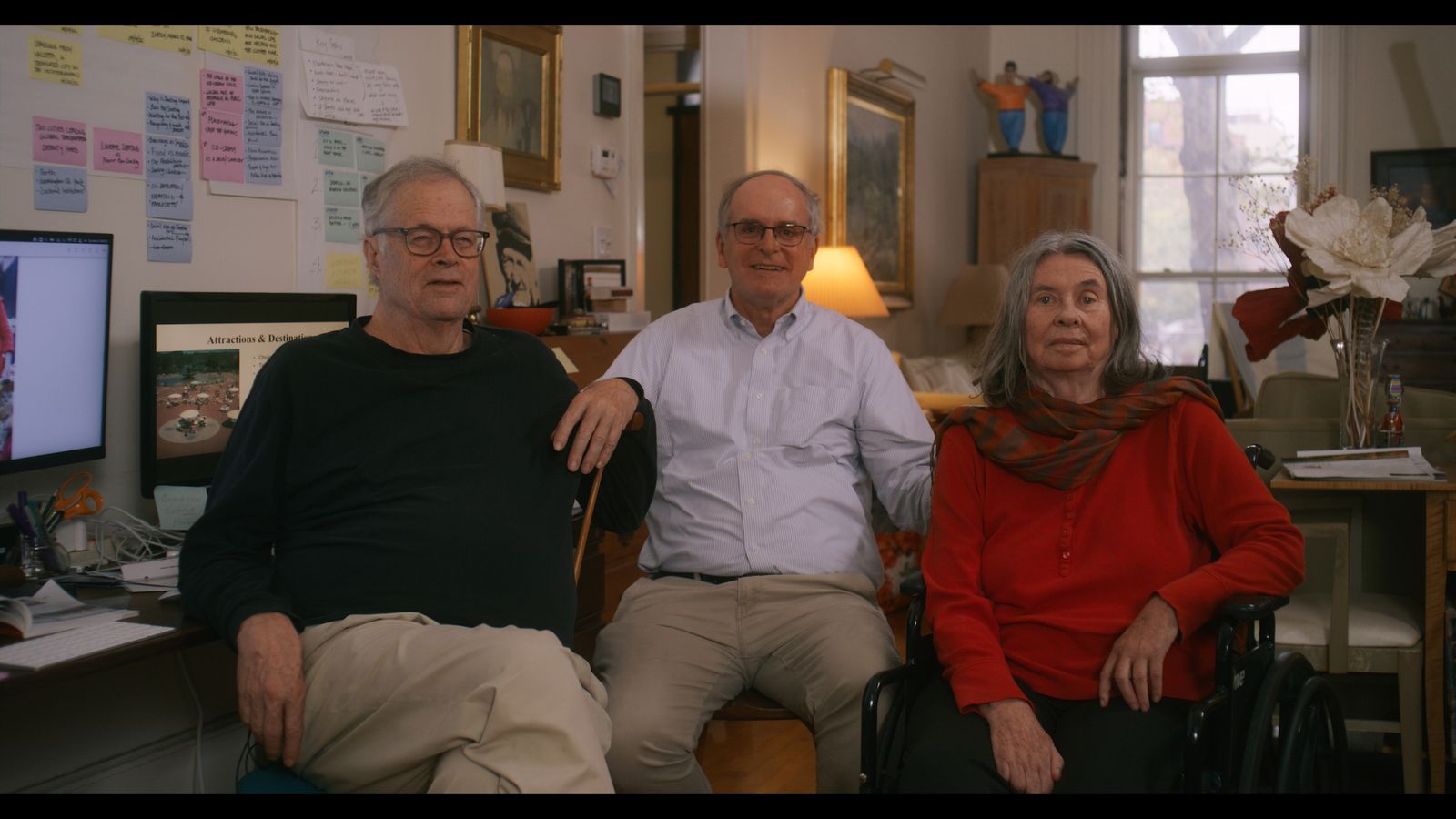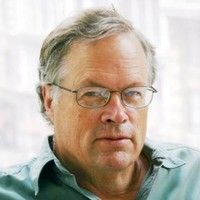colliding with some of the best
The Worst "Killer Intersection" in Florida
One of the worst intersections in the state is at I-95, Federal and Linton, spreading out to the West and east to A1A. It has the worst sidewalks and its hostile intersection are what most people first experience as they enter Delray Beach. It should be an embarrassment for a city to have such a street be people's first big impression of it.
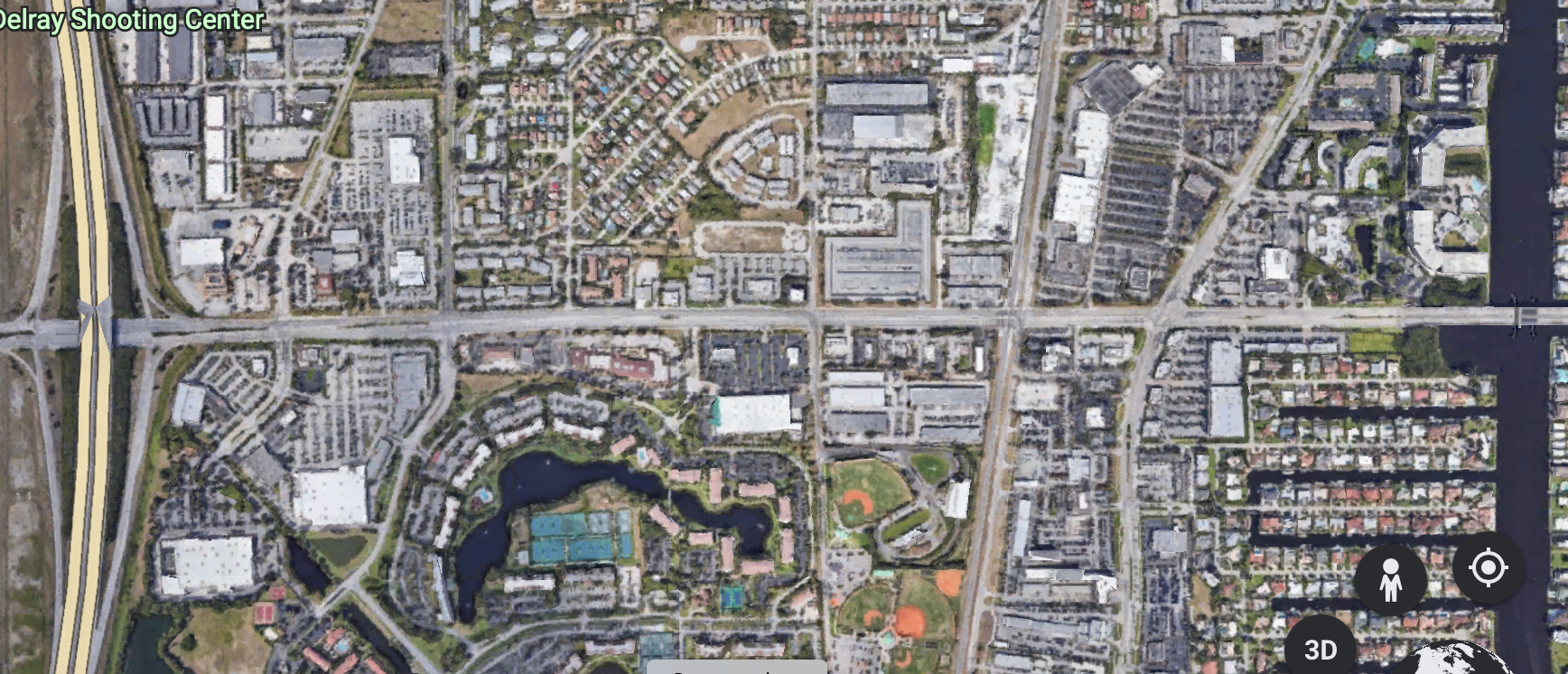
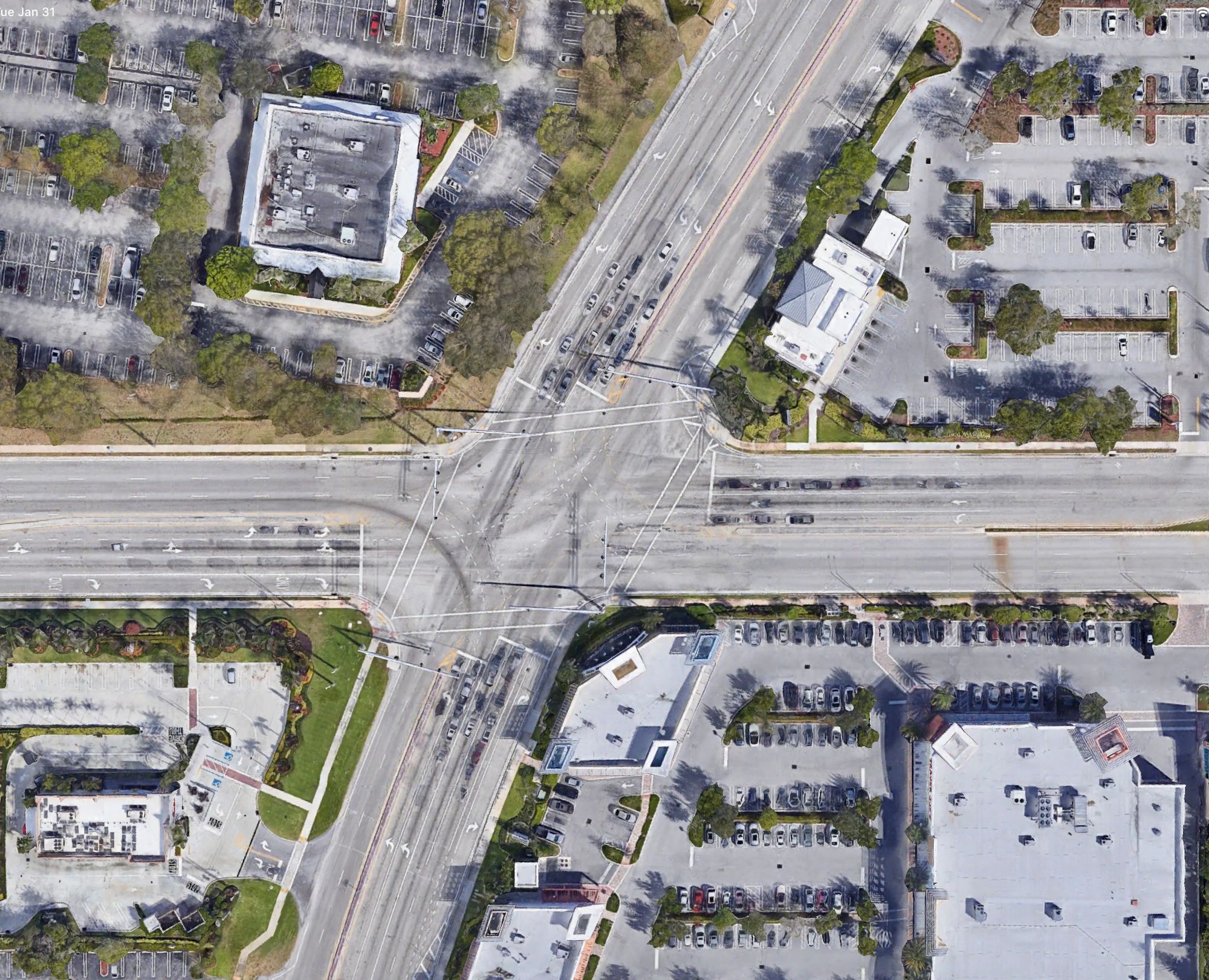
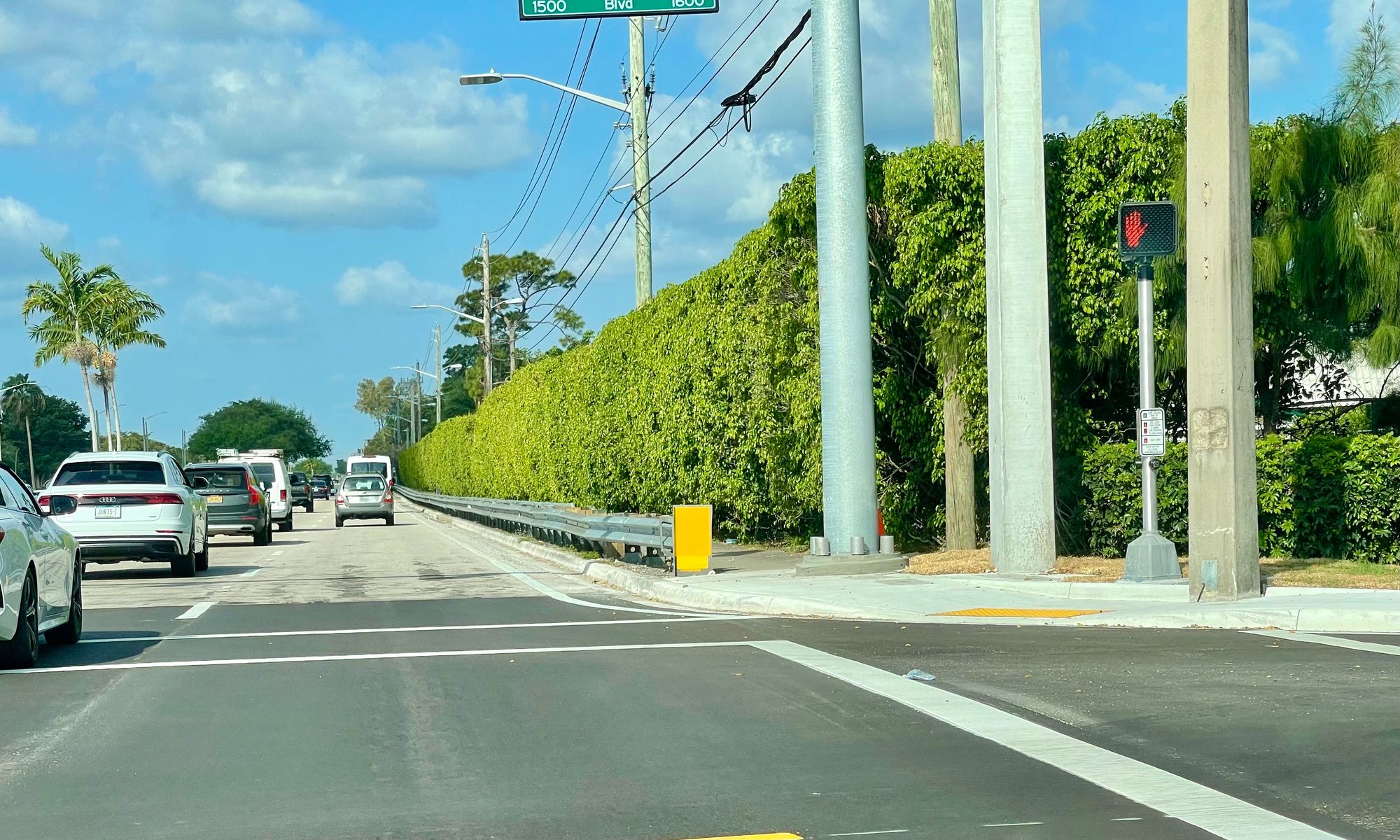

Left going west and right going east. Few people dare to walk or bike. We often see mothers with their children carrying groceries trying to walk on too narrow...or no sidewalks. It is tragic.
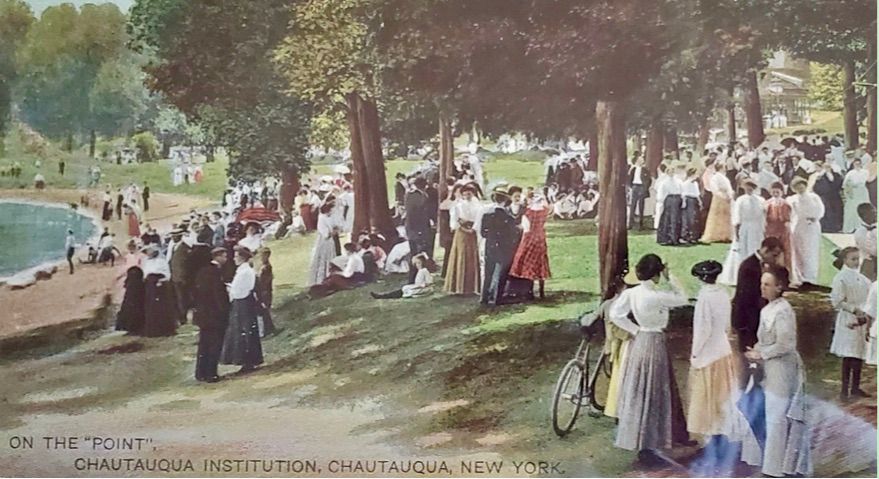
At the other extreme, Delray is confront with massive development of new residential that has only garages and no sidewalks on what were formerly wonderful residential streets.
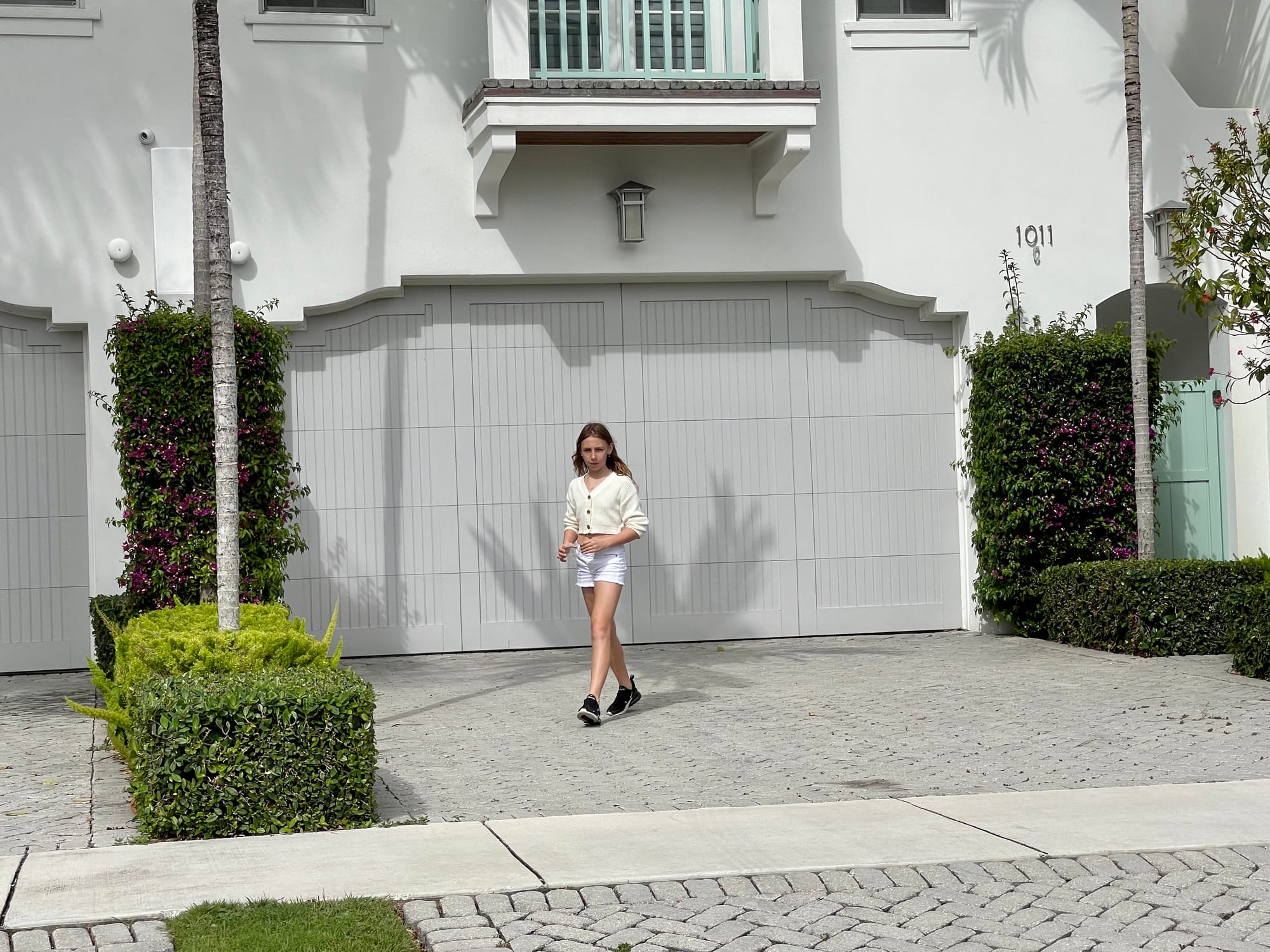
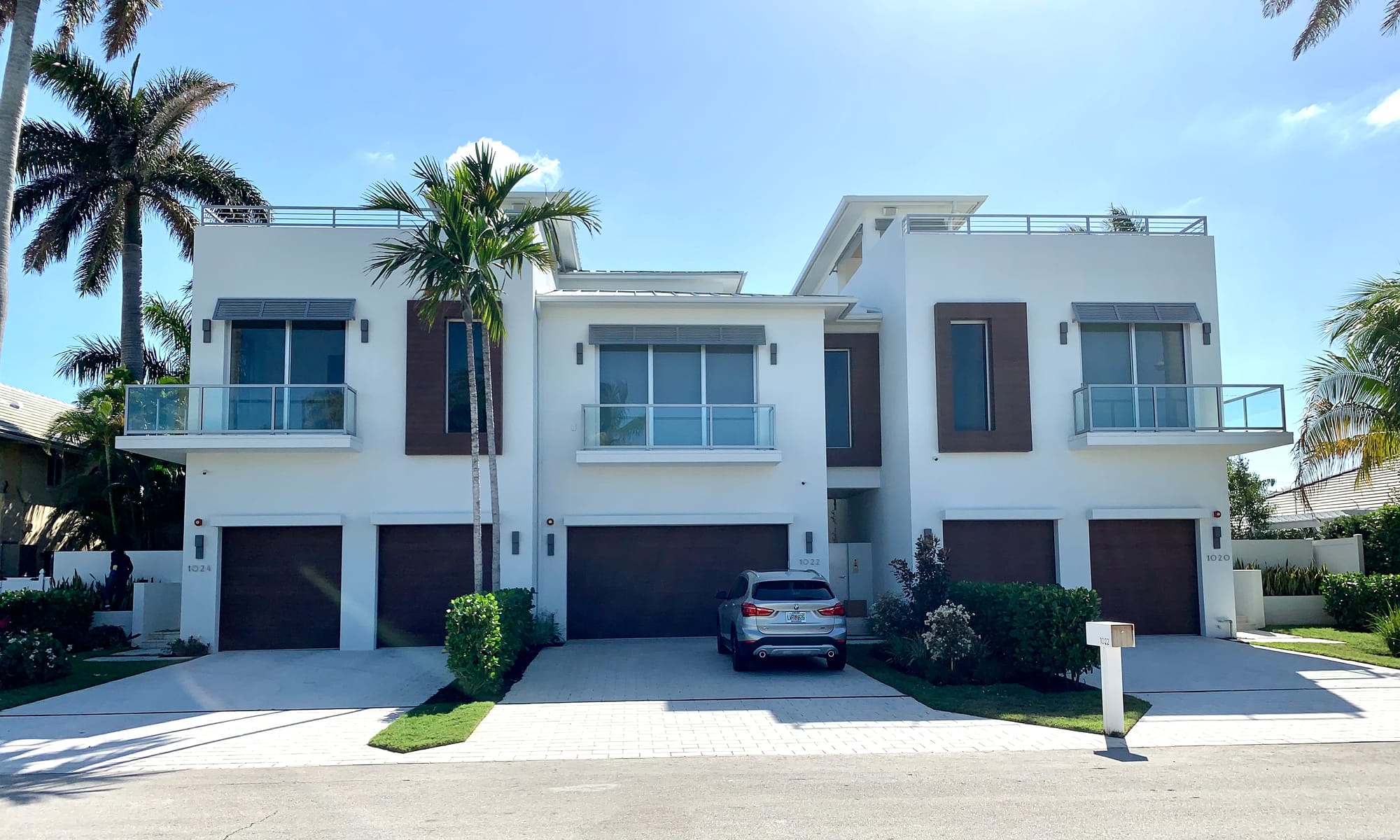
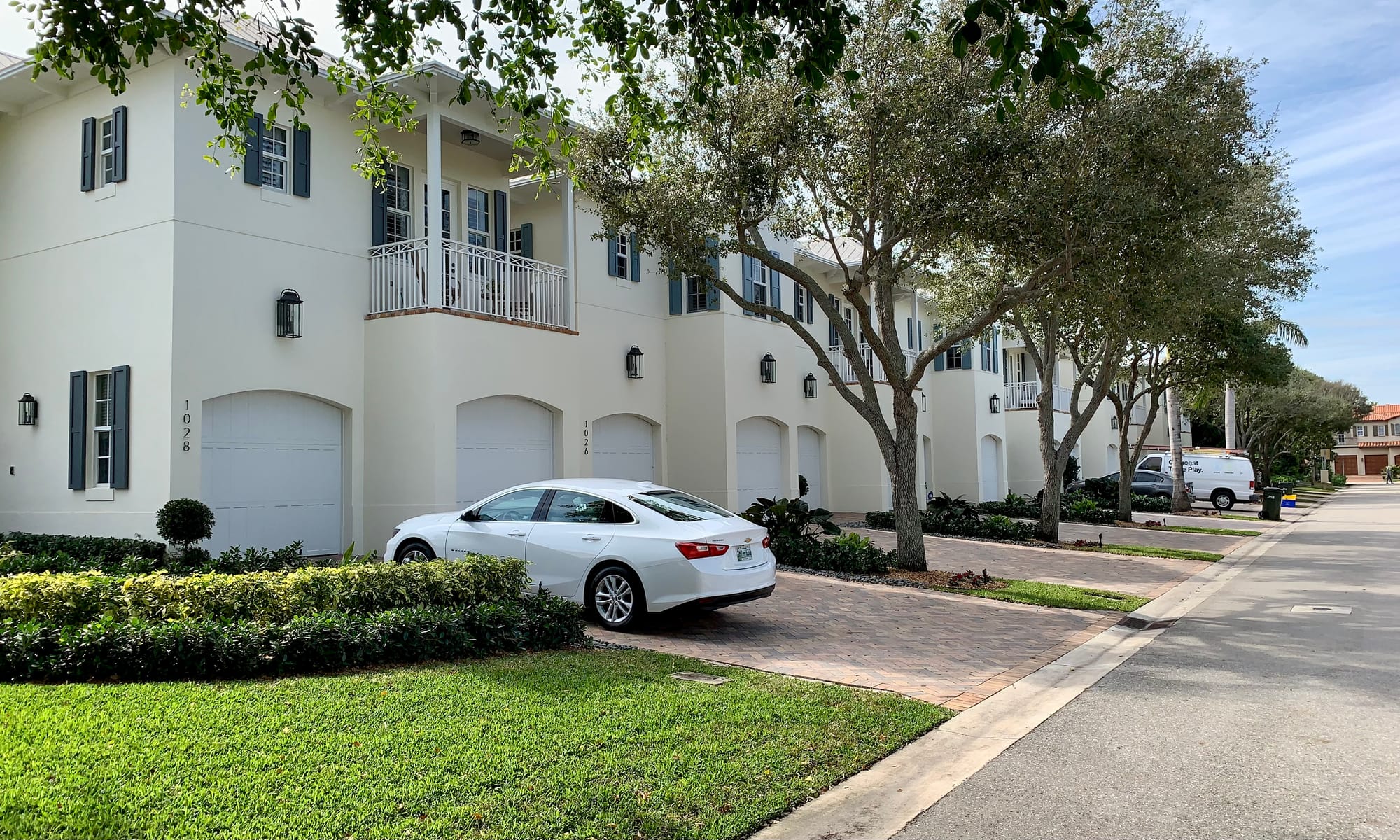

George Bush developments
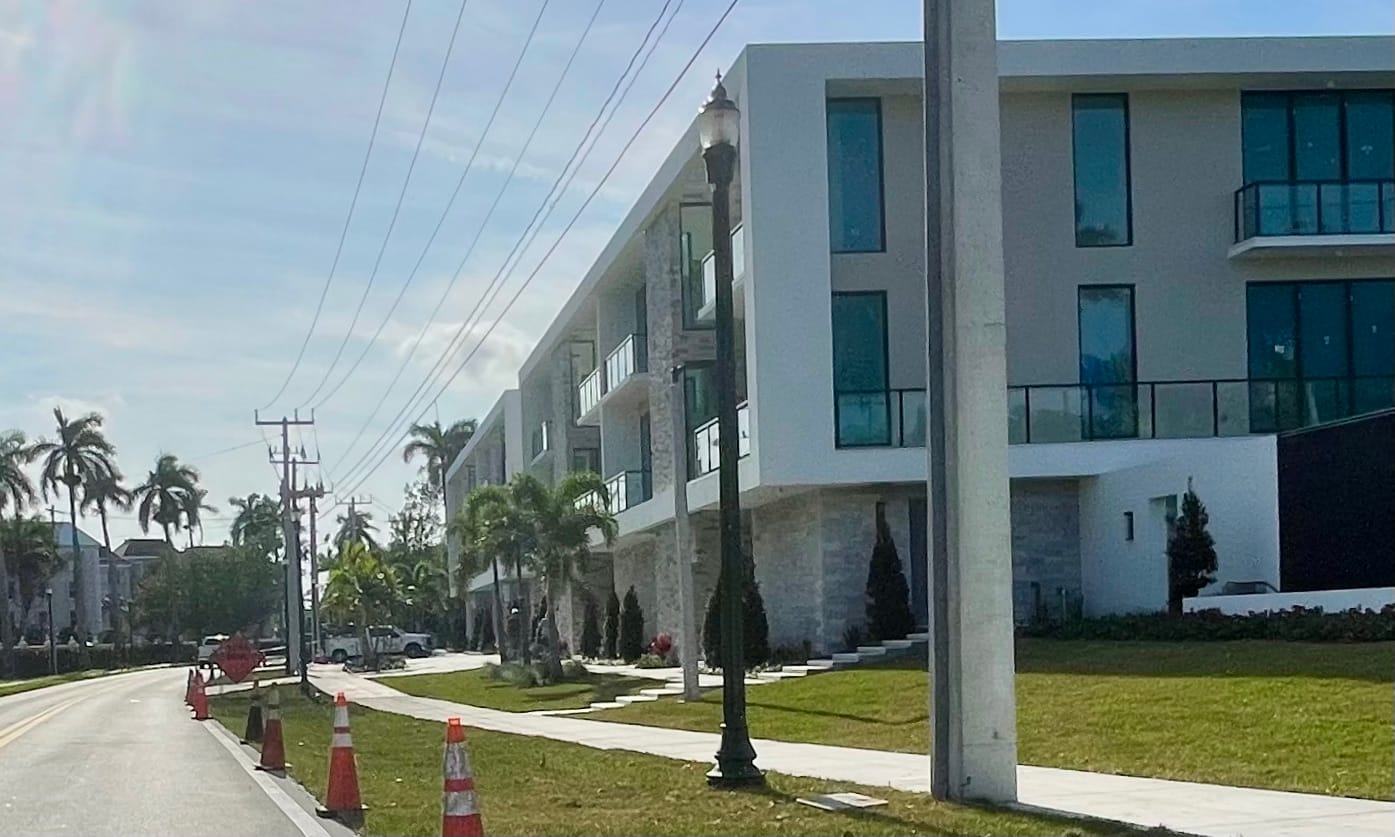
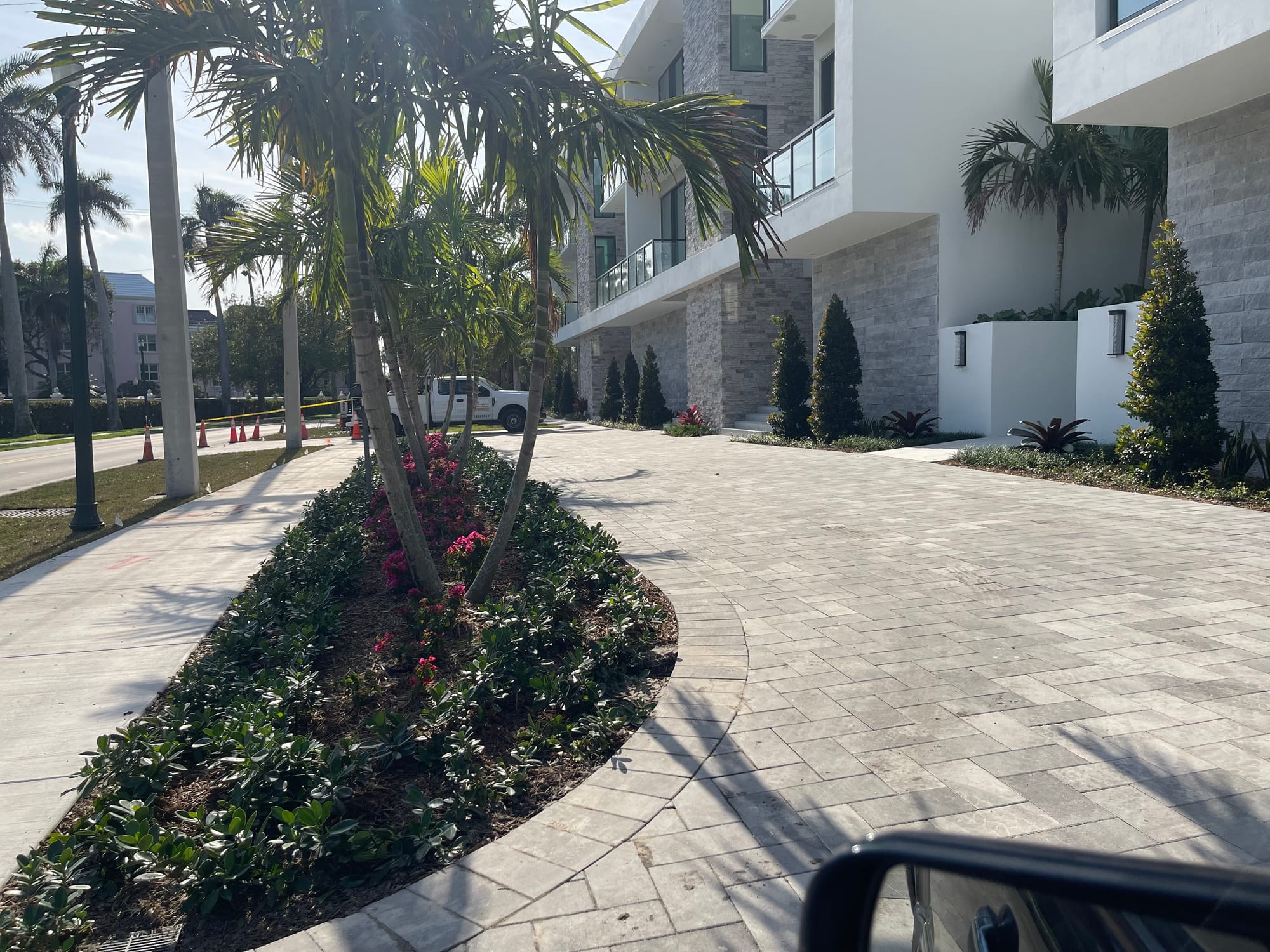
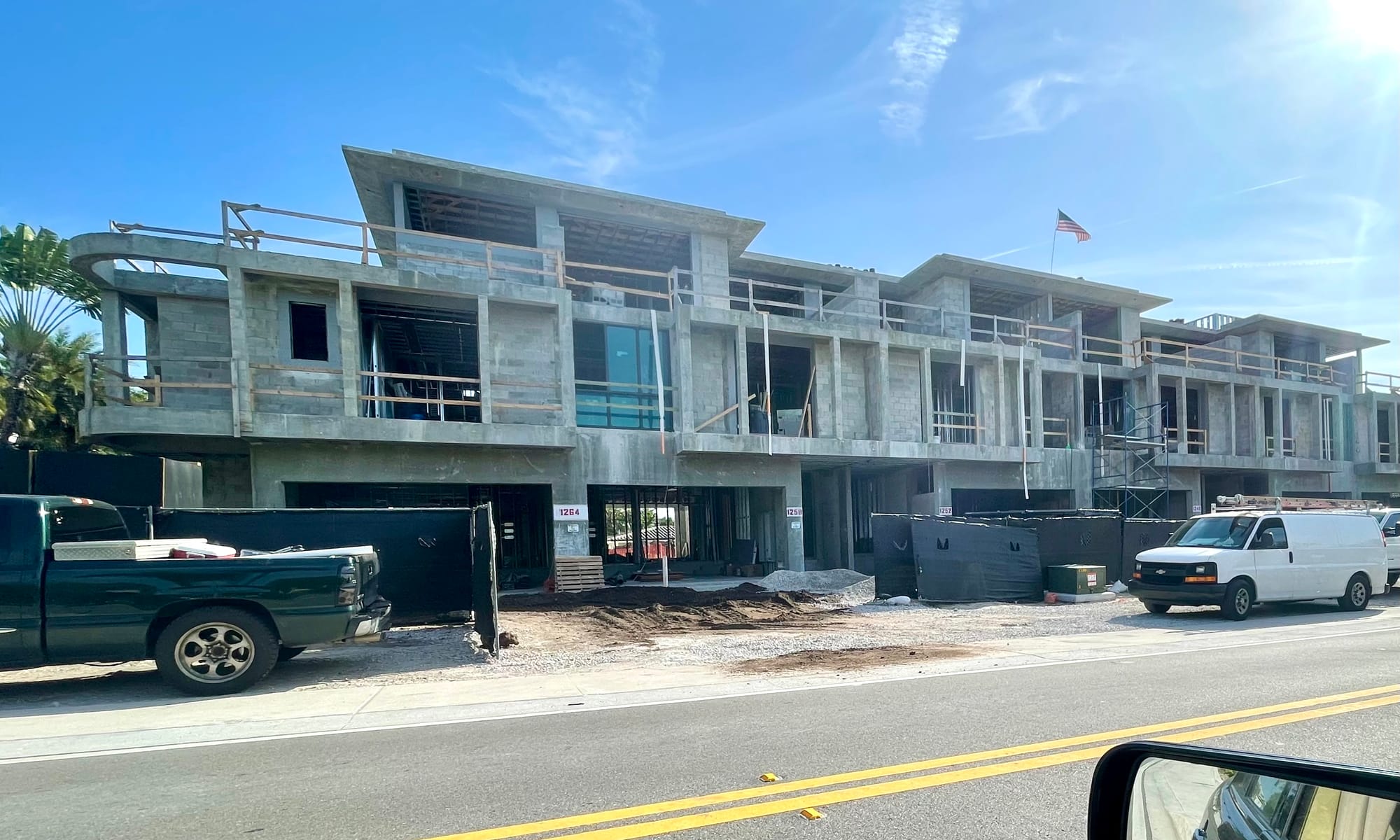
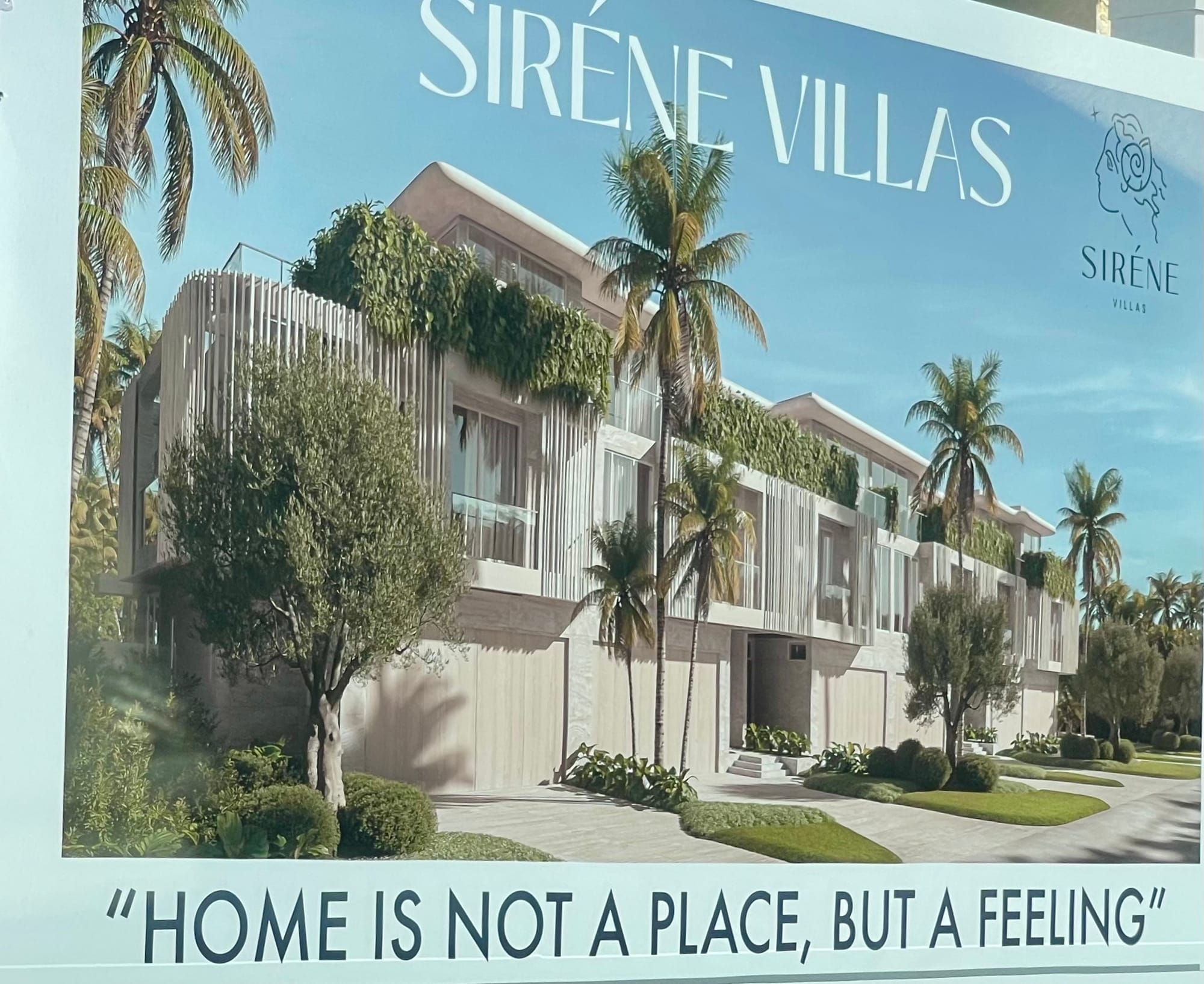

Historic streets in parts of Delray are some of the best we have seen anywhere
The narrow residential streets in Delray's historic neighborhoods are what we and many of our neighbors have always liked most about the city. These streets are wonderful for walking, biking and playing on. We have biked on most of these streets and we feel like we are in heaven when we do so because of how peaceful and beautiful they are.
Drivers practically "walk" their car through these neighborhoods because they are shared with all kinds of people, urging them to drive carefully. Recently, we were on one such street in a car and it was easy to stop and talk to people when we had a question, almost like we did when riding a bike. It felt like a truly shared space where everyone was welcome.
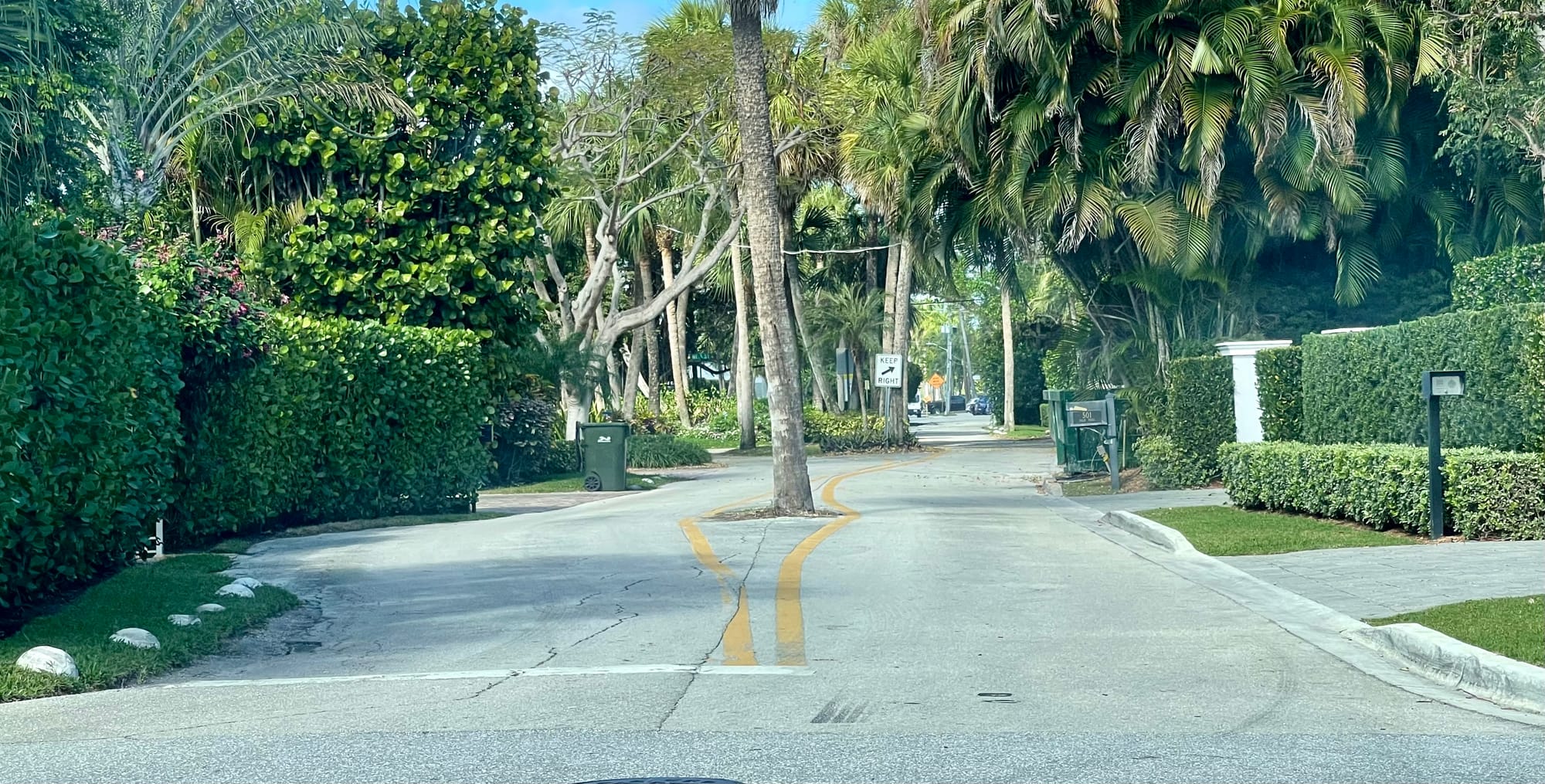
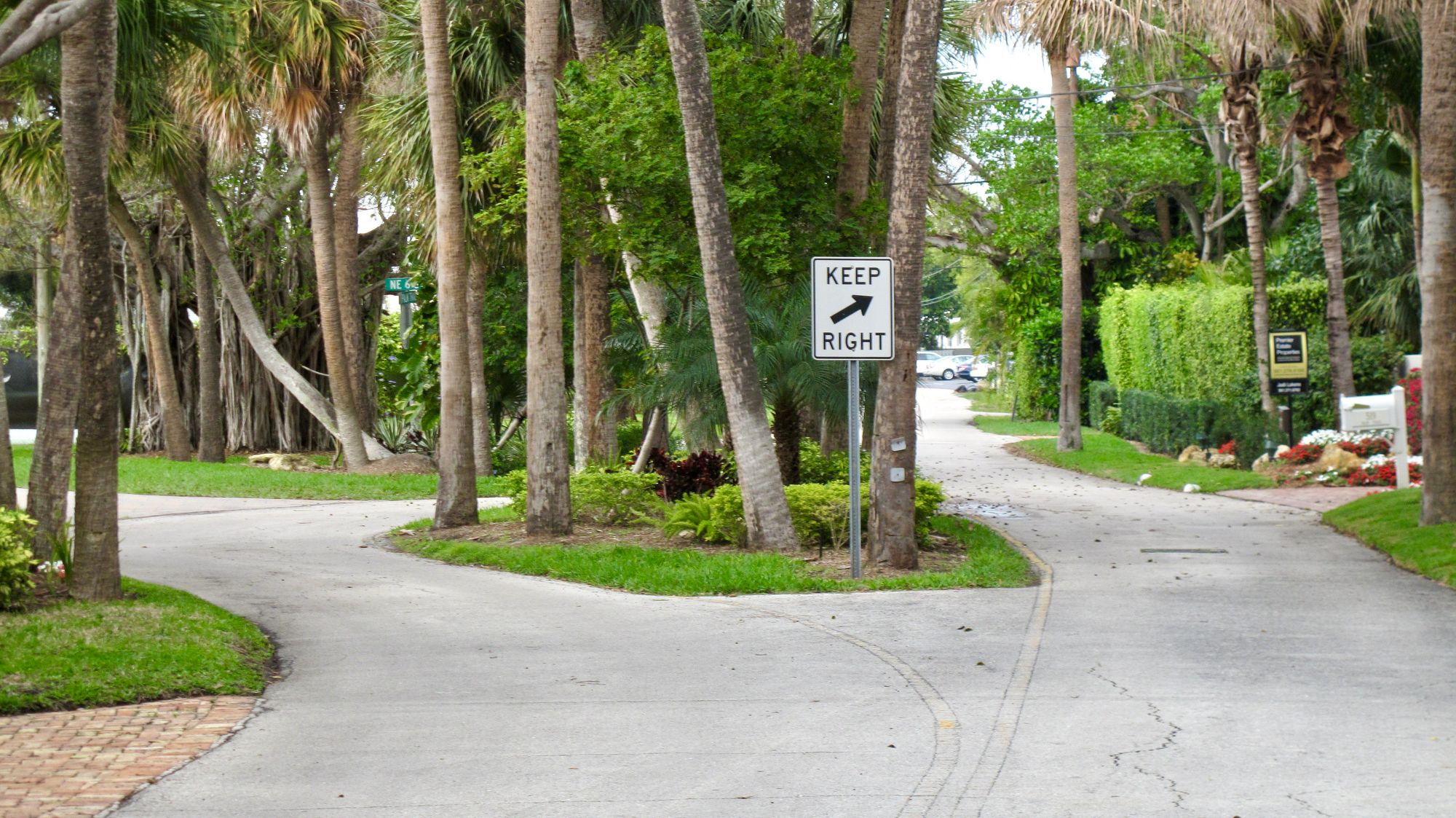


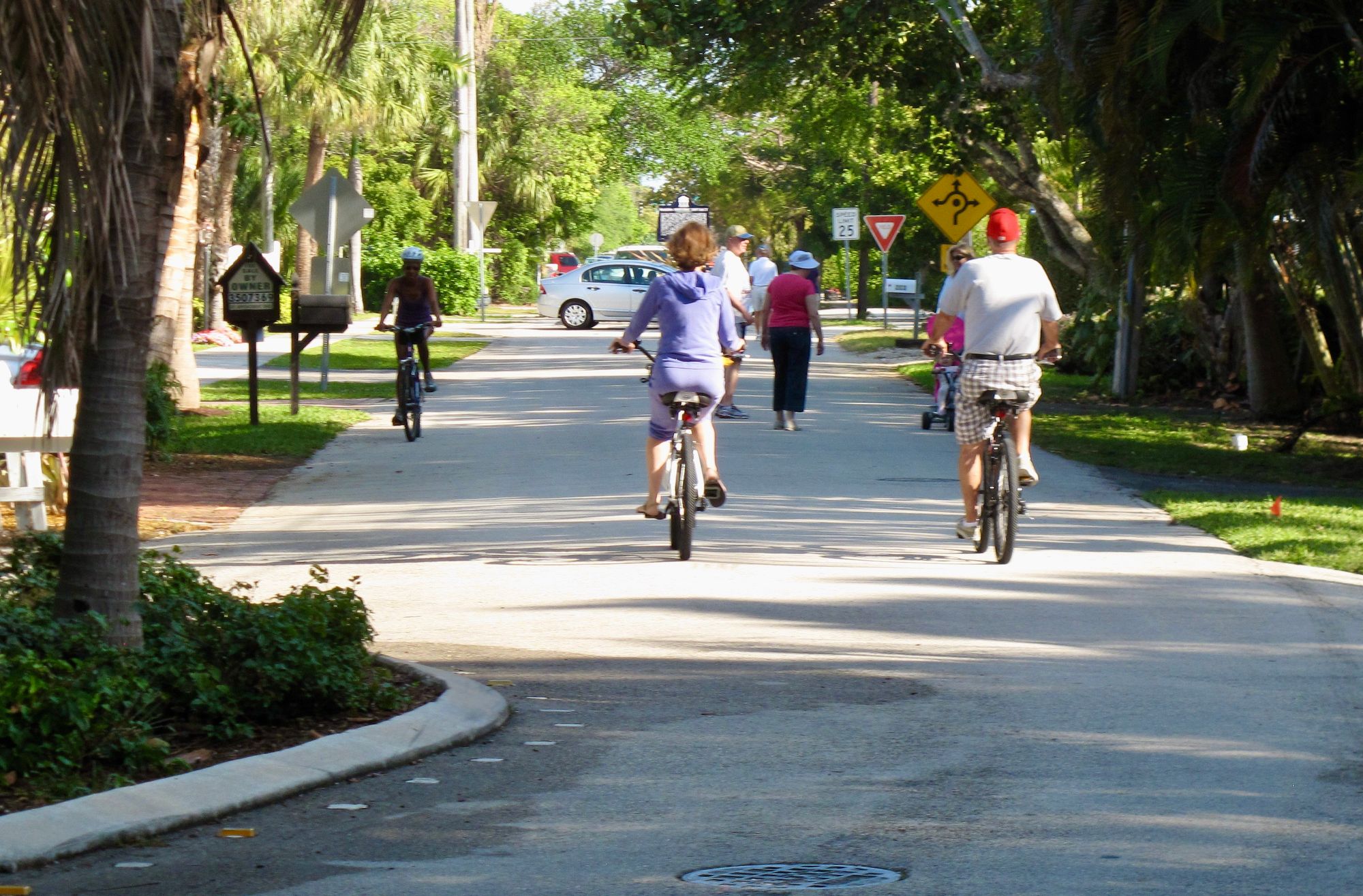
Neighborhood intersections, roundabouts, and local streets
Now that we are trying to understand what the future of Delray could be, we drive through various neighborhoods where we see all kinds of people that clearly love and care for their home. There is a strong village feel to most of these places.
These special neighborhoods start at the intersections, which act as gateways into them from the main streets. As one eases into each neighborhood street they immediately understand that speeds here are low and because of that, they are comfortable and safe to walk along. Some yards have swings, ornaments and seating that invite people to look more closely. In many places, people are strolling with their pets. There is a feeling of relaxation and respect for the neighborhood.
One can imagine that, if they lived here, they would enjoy a strong sense of community. This seems even more true in some of the lower income neighborhoods where people spend more time in front of their houses, hanging out with their neighbors, laughing and chatting. We like those areas the most.
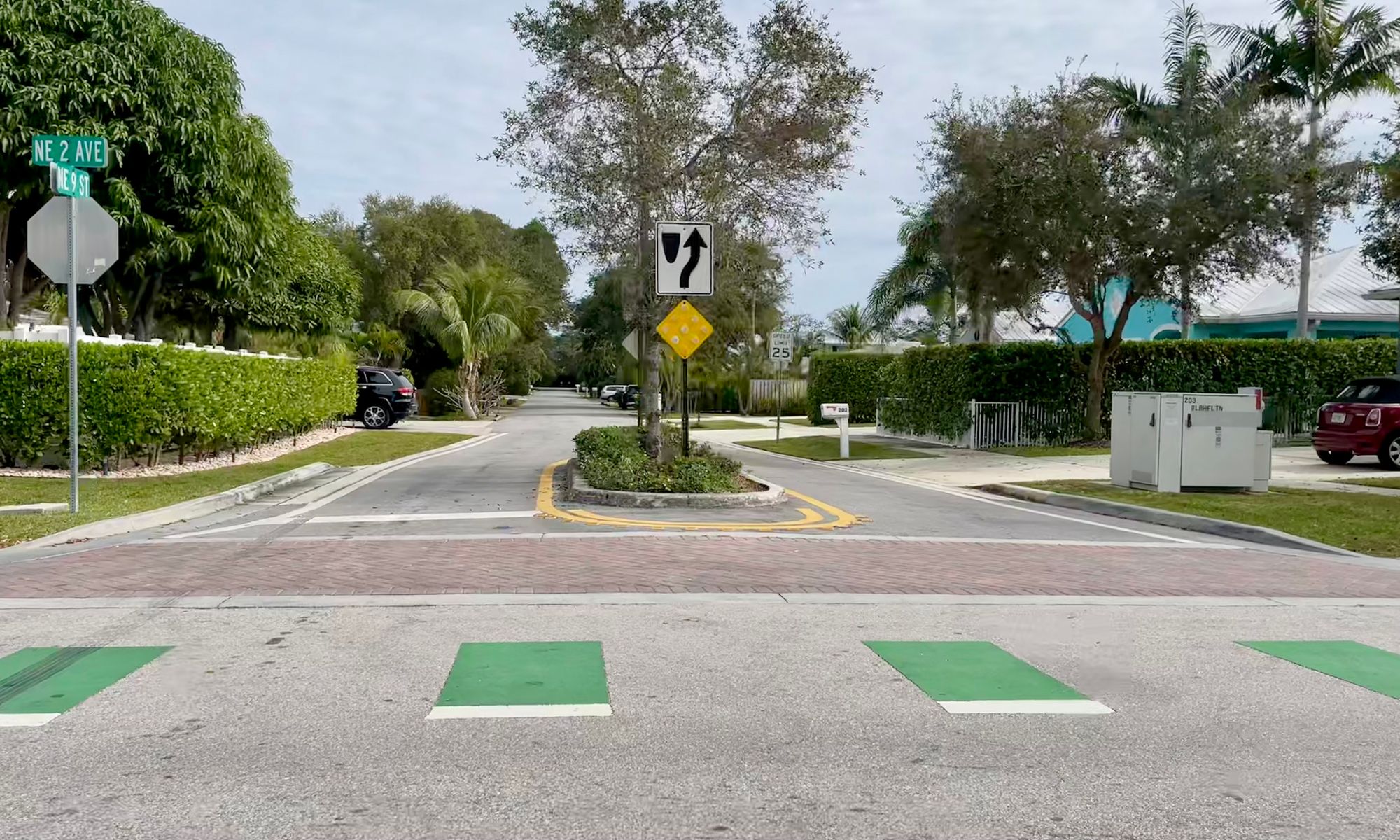
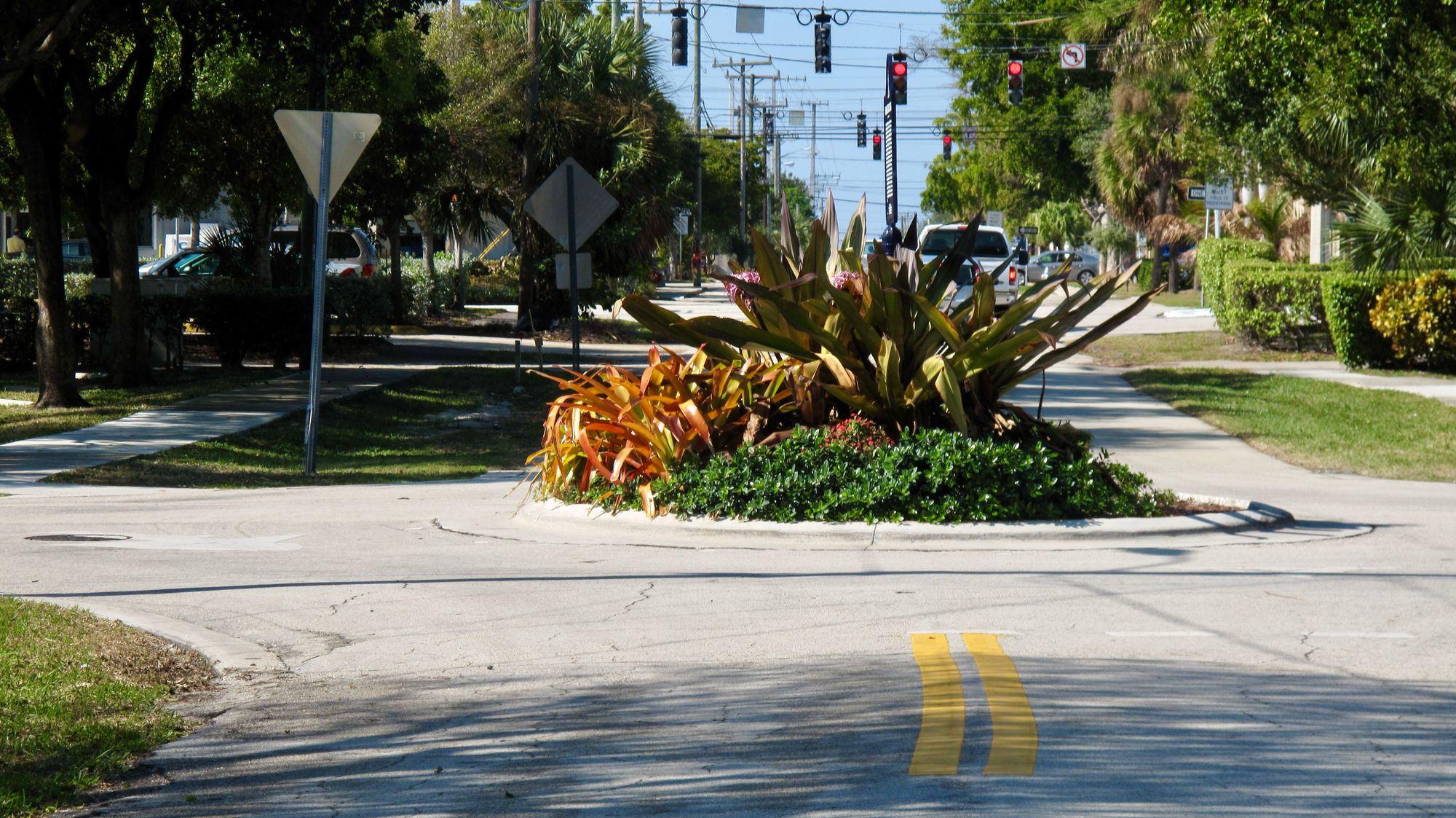
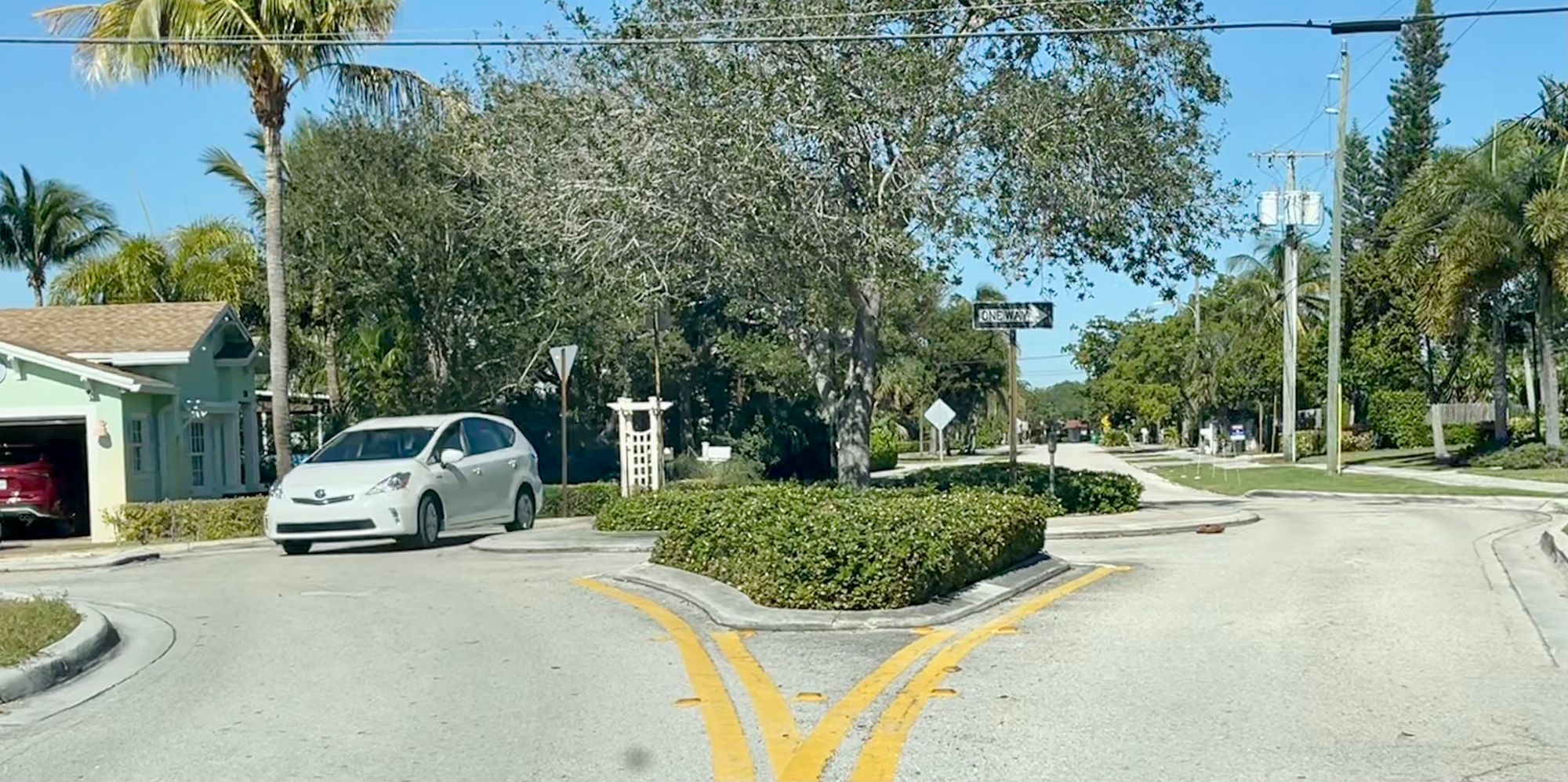
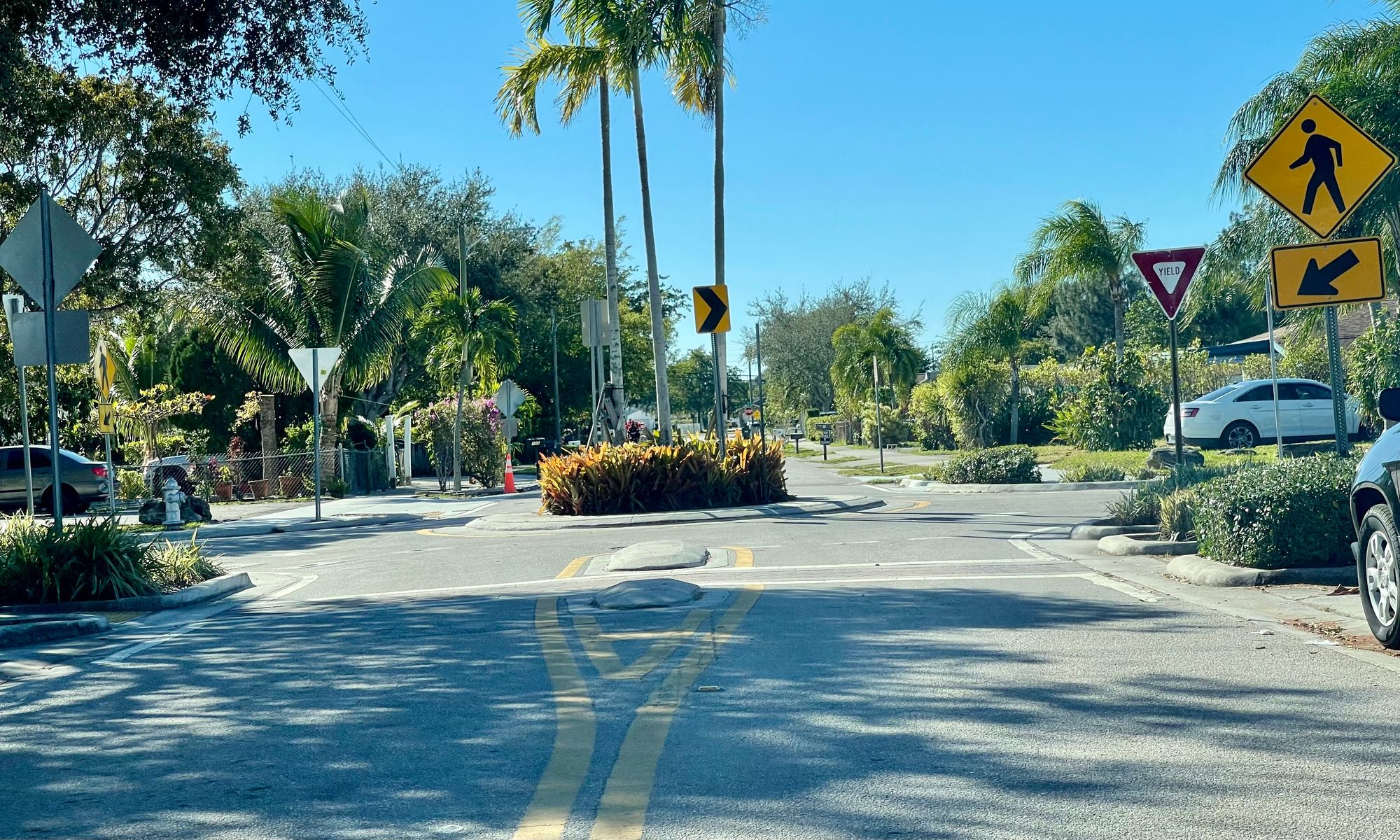
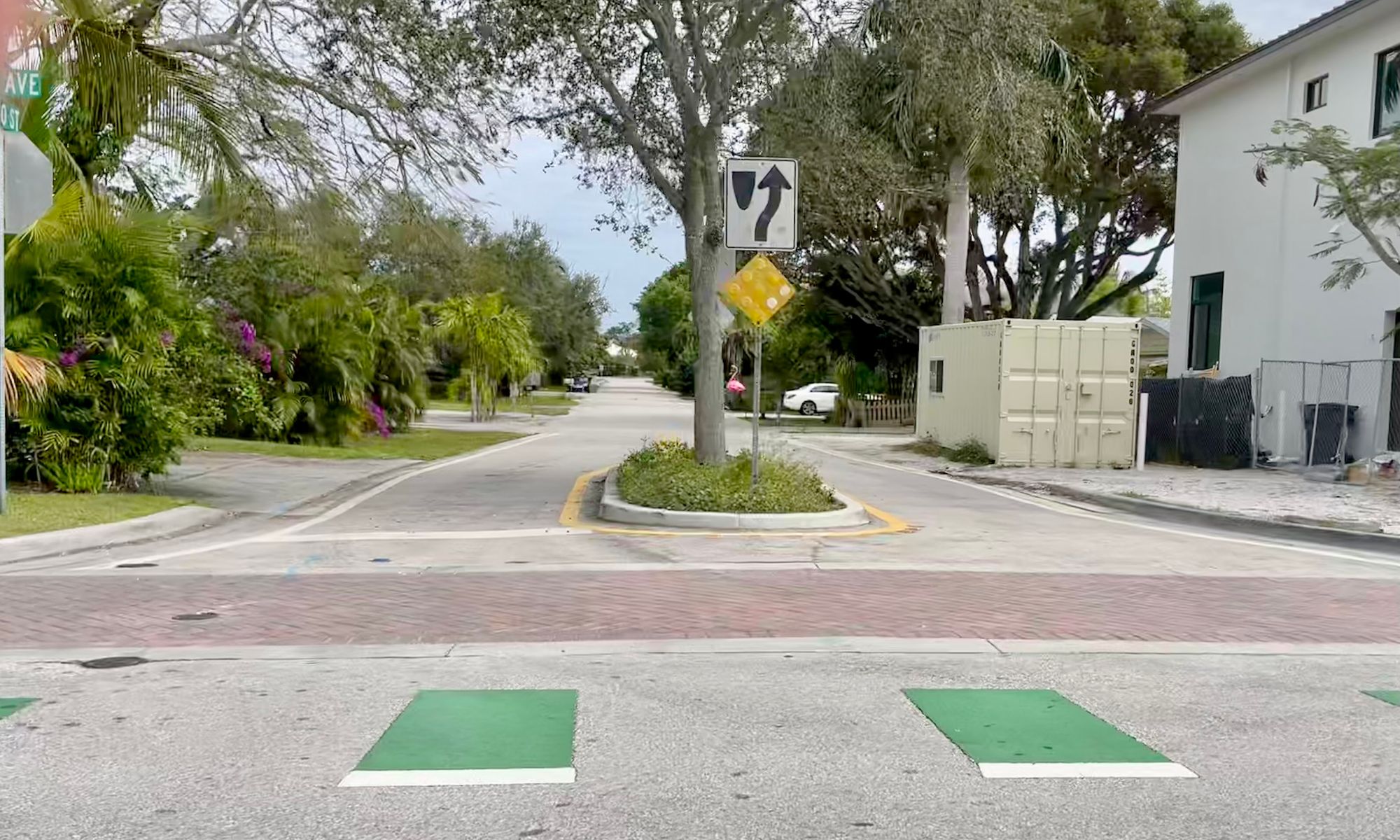
Beautiful North/South Roads in Delray Beach
Pineapple Grove NE 2nd section

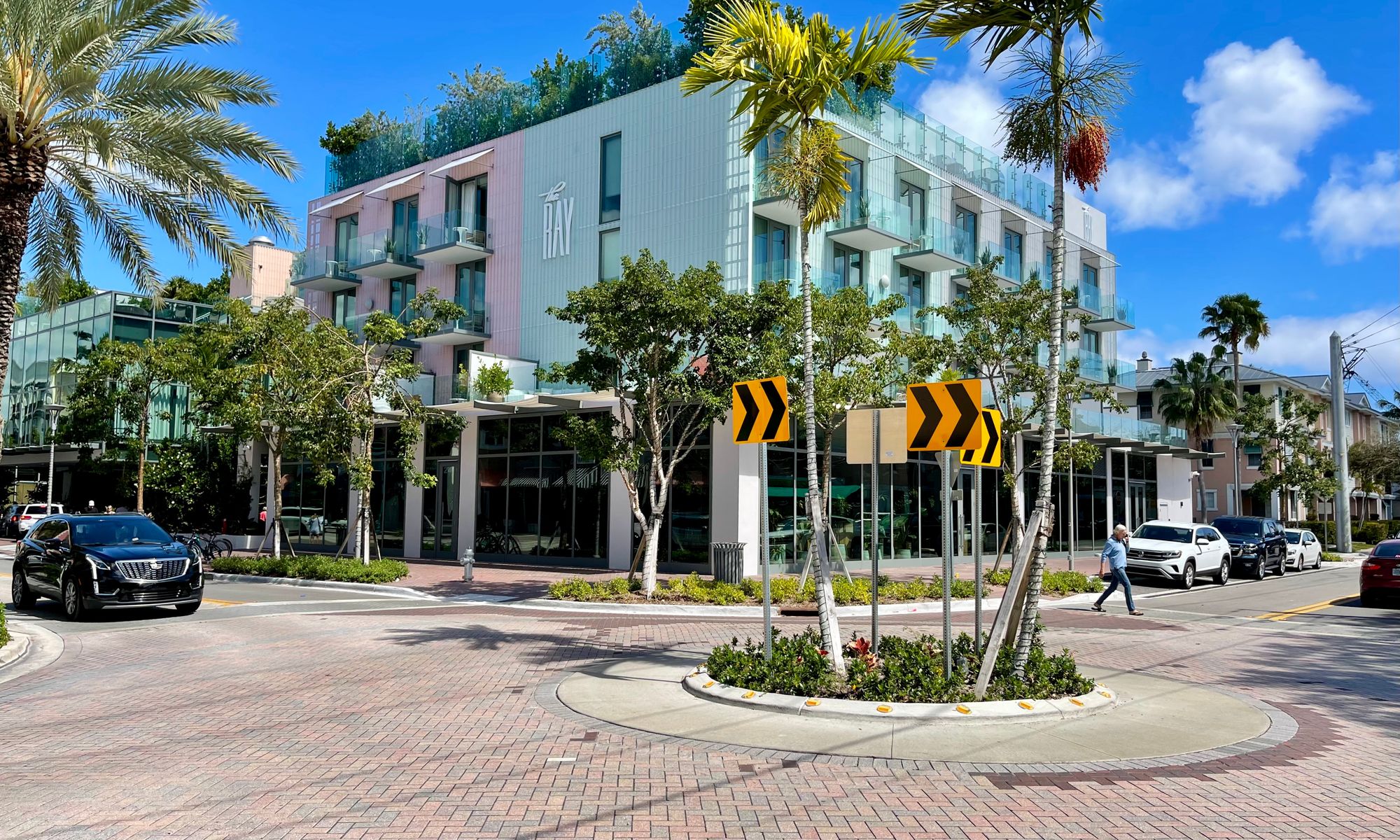
NE Second which becomes Seacrest going north
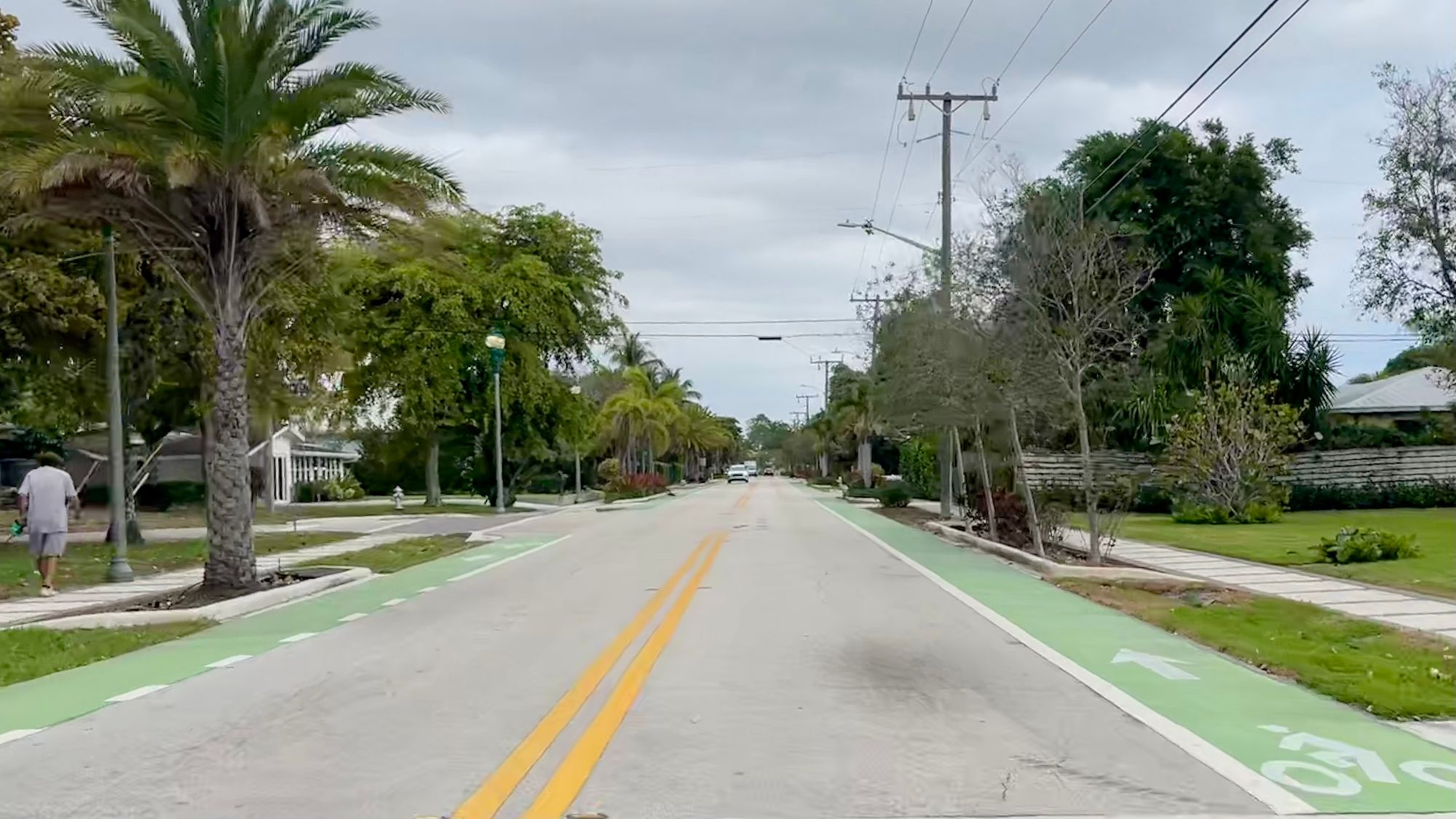
Swinton Avenue, north and south of Atlantic intersection
This intersection has sidewalks on both sides with bicycles sharing the road. The speed limit is 25 mph. There is no conflict between bikes and cars. One feels like driving slow and enjoying the experience.

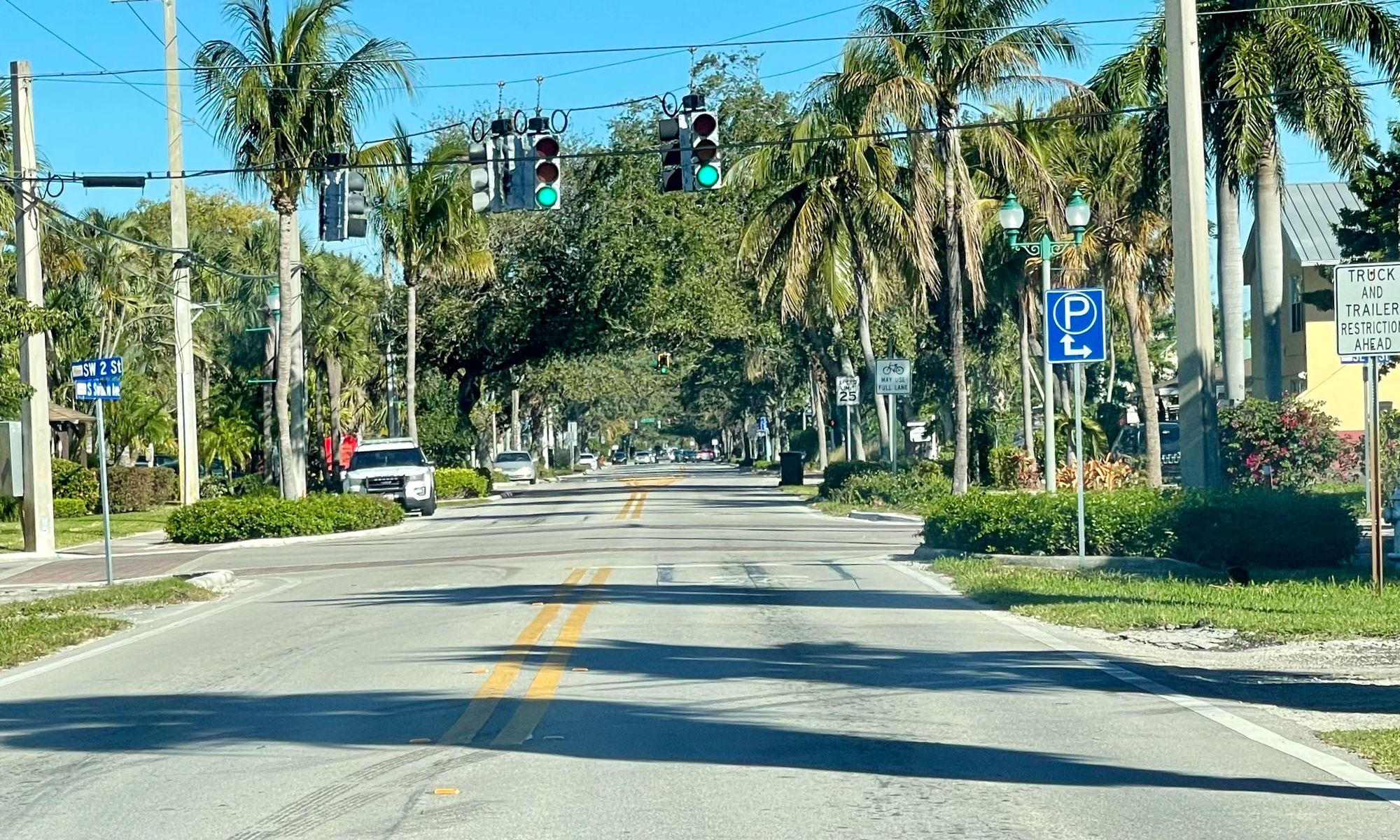
Unfortunately, these kinds of peaceful and enjoyable shared streets are not the only kind to be found in Delray...
The Heart of Delray Beach
Social Life at the Corners
This intersection is lined with vibrant destinations full of people. What's more, because the streets are narrow here, vehicles are naturally slowed to almost a walking speed. Drivers are able to see and take in the sights, drawn in by the volume of interesting scenes and people. Pedestrians are here because this is the hot spot, the Heart of Delray, where everyone wants to be and more importantly, where everyone feels comfortable being.
The Four Corners SE Second
Each corner of this intersection is a gathering place where people can stop and talk, hang out, and even stand in the street without anxiety.
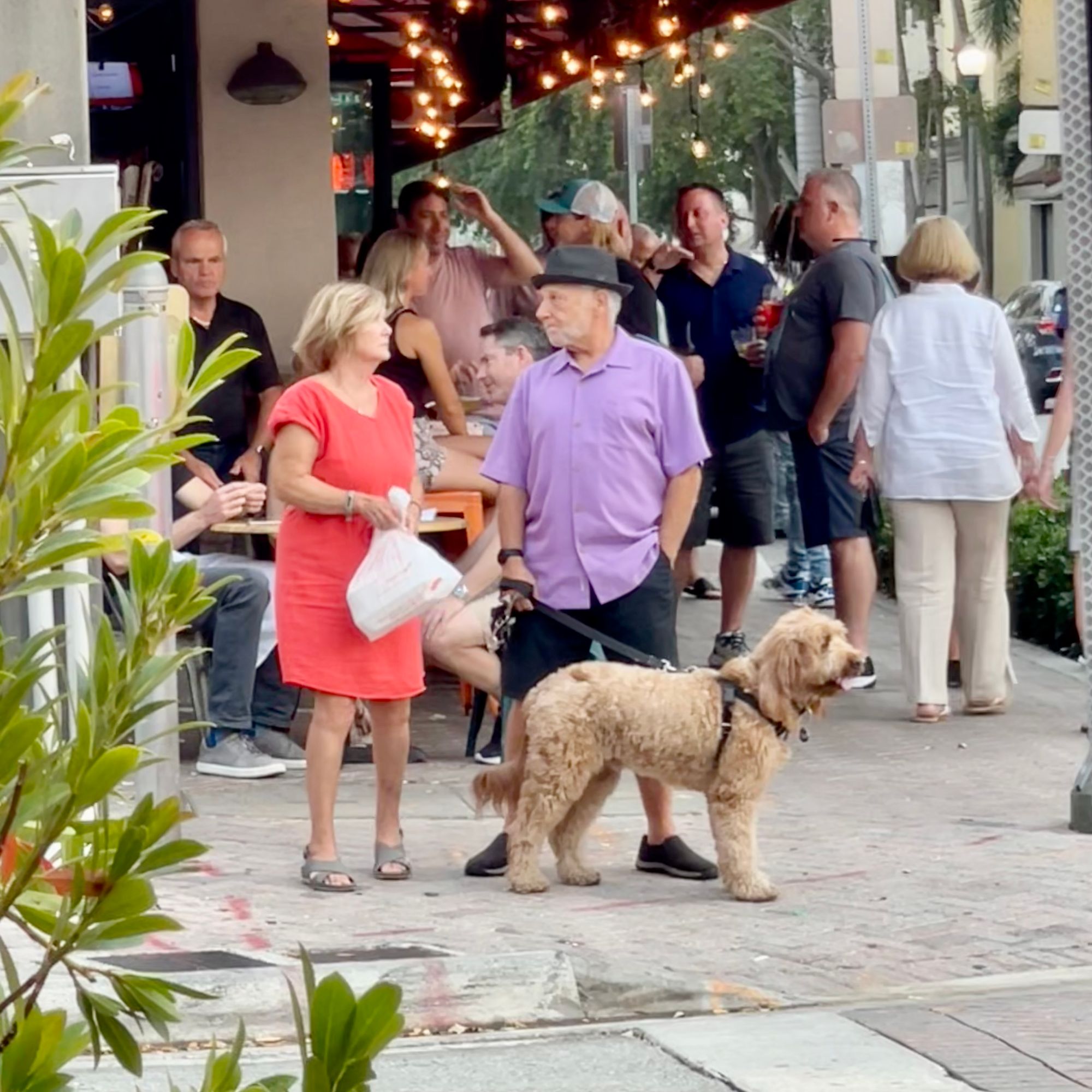
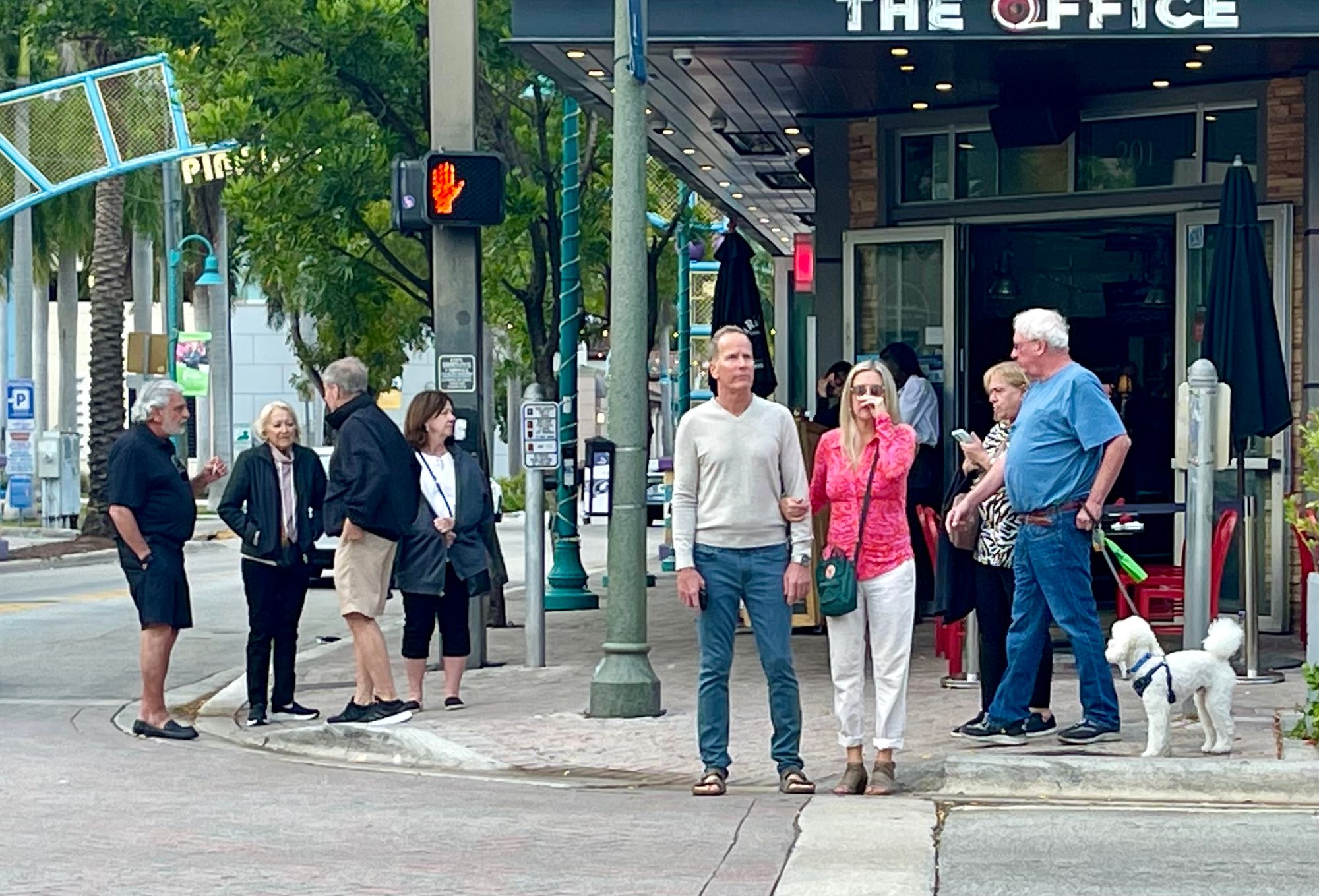
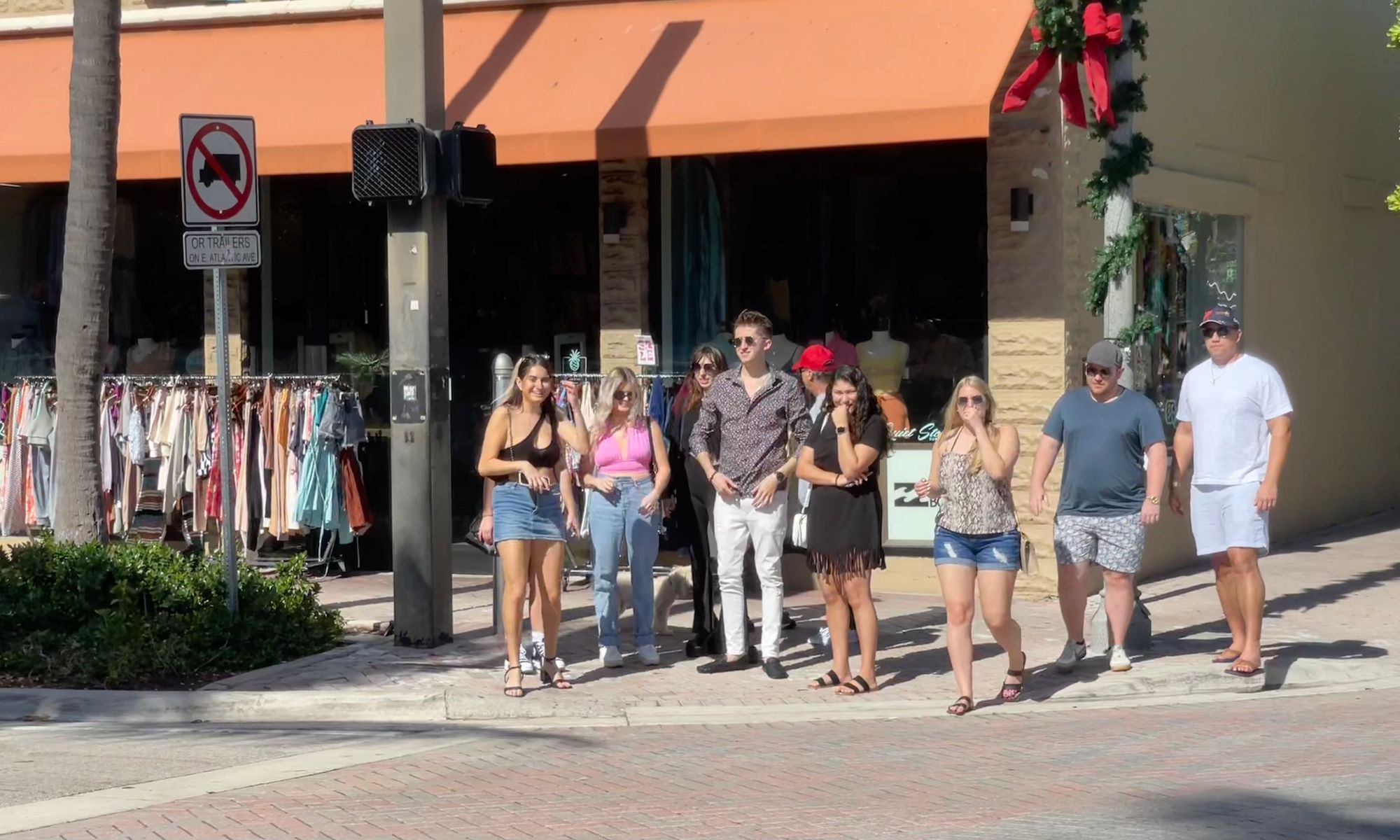
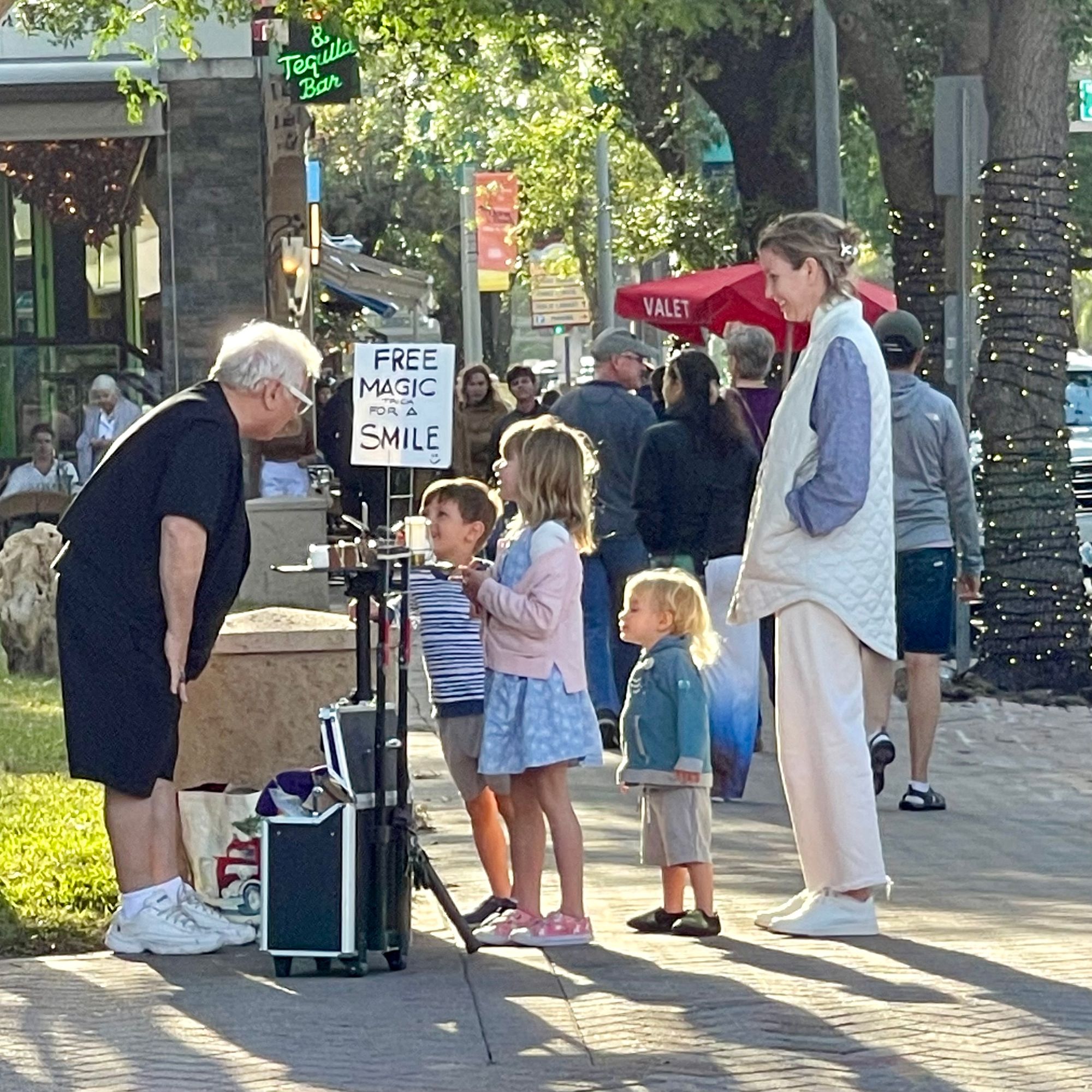
Each photo above shows one of the four corners
Waiting at the corner is a social experience. Whereas at the intersection we saw before, waiting at the corner is a stressful experience that people want to be over as soon as possible, here people actually enjoy spending time at the corner. People are in groups of all sizes, ages and cultures, just enjoying themselves without a care, because cars drive slowly and there is much to see and do.
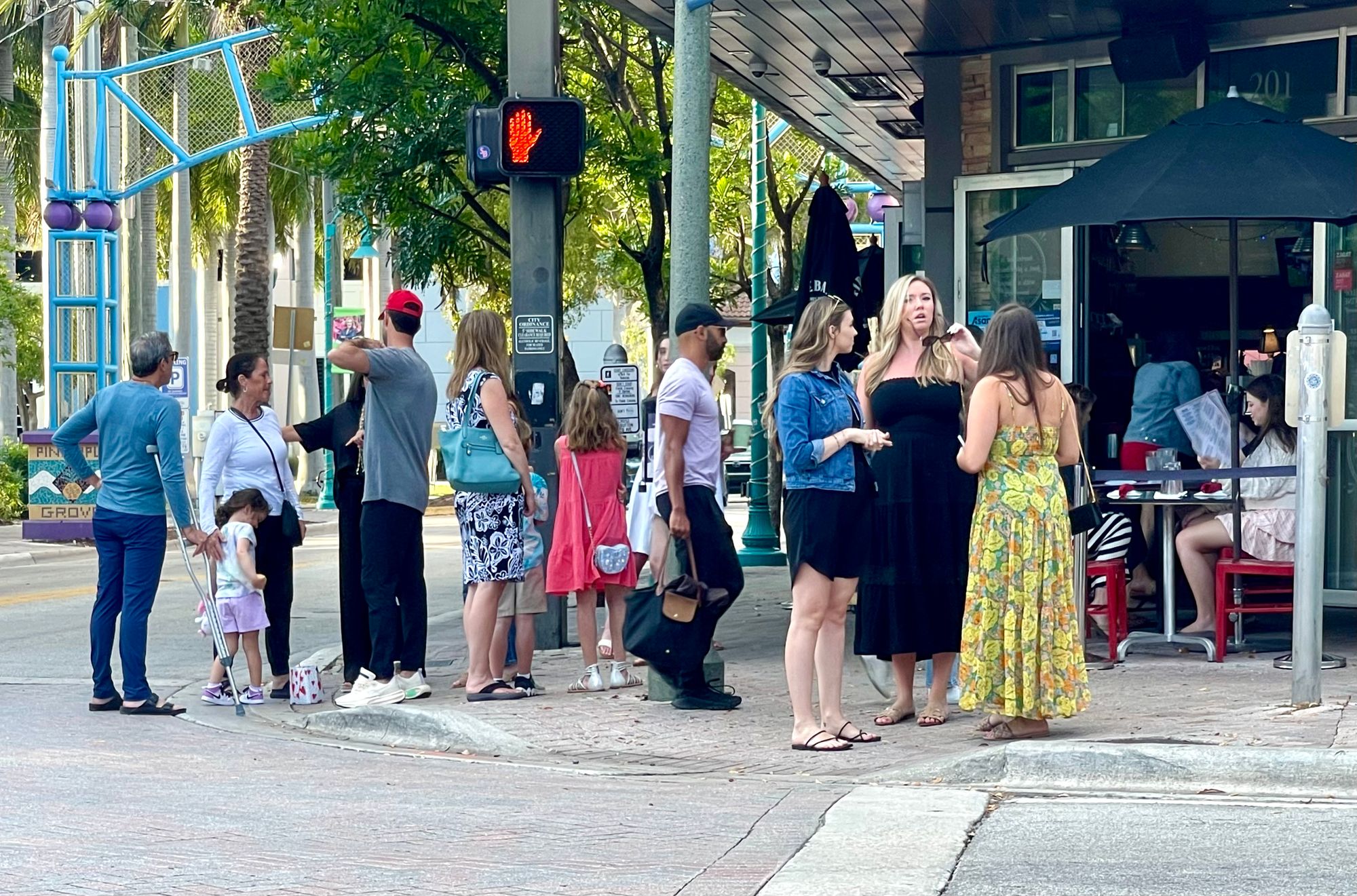
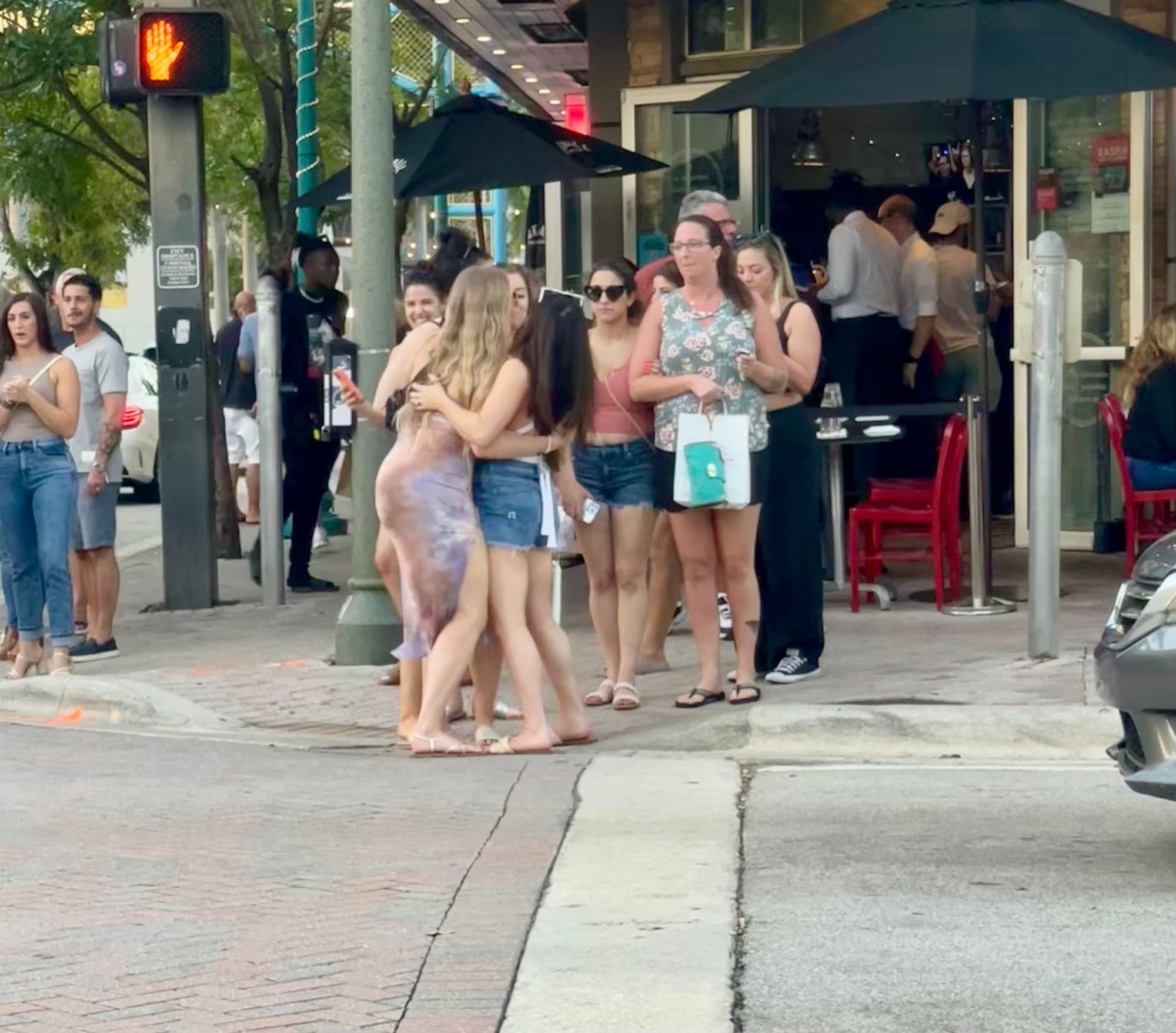
Expressions of joy and interest at the intersection
Another crucial difference is that at this location, crossing the street is casual and safe. It doesn't require intense focus and carefulness. People are at ease.
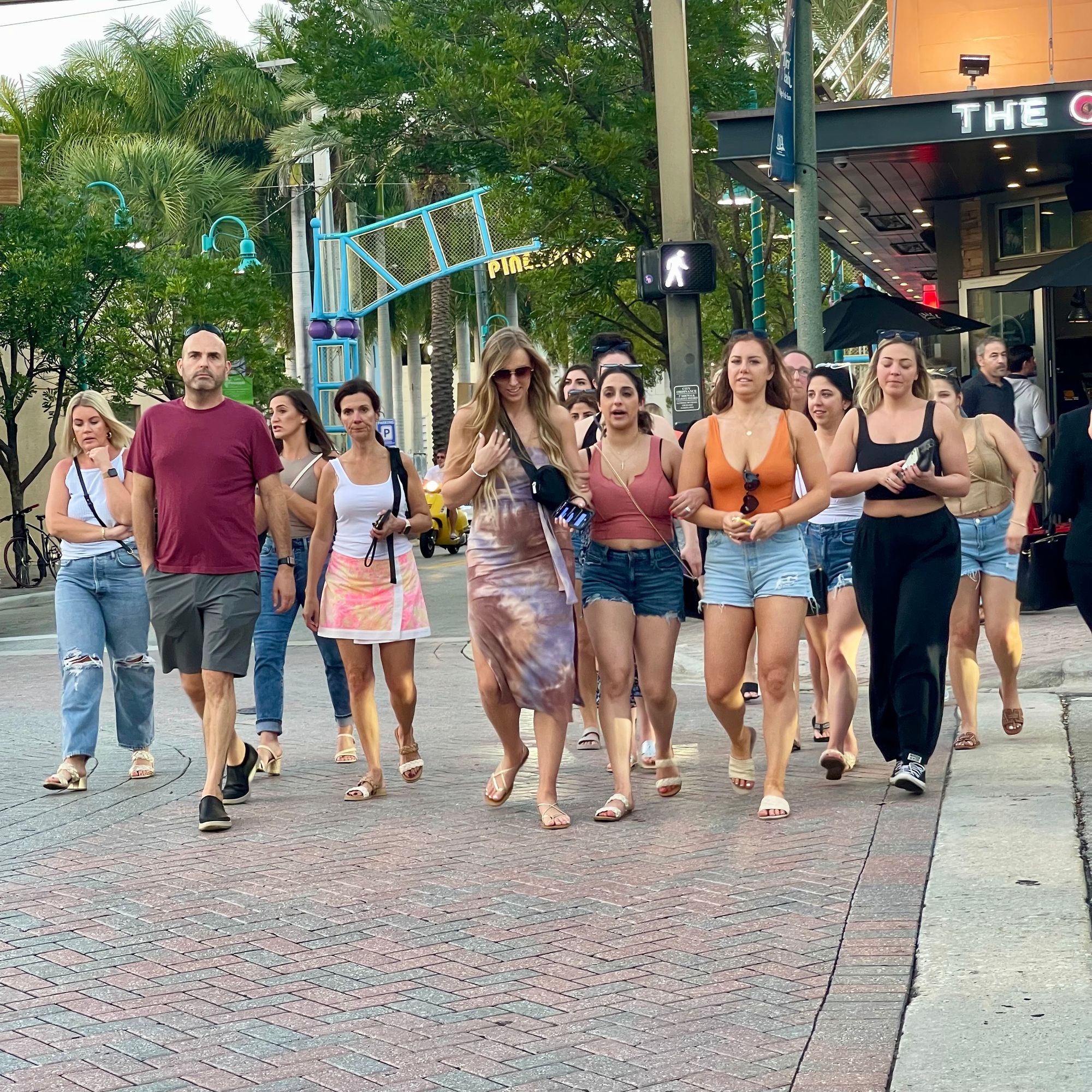
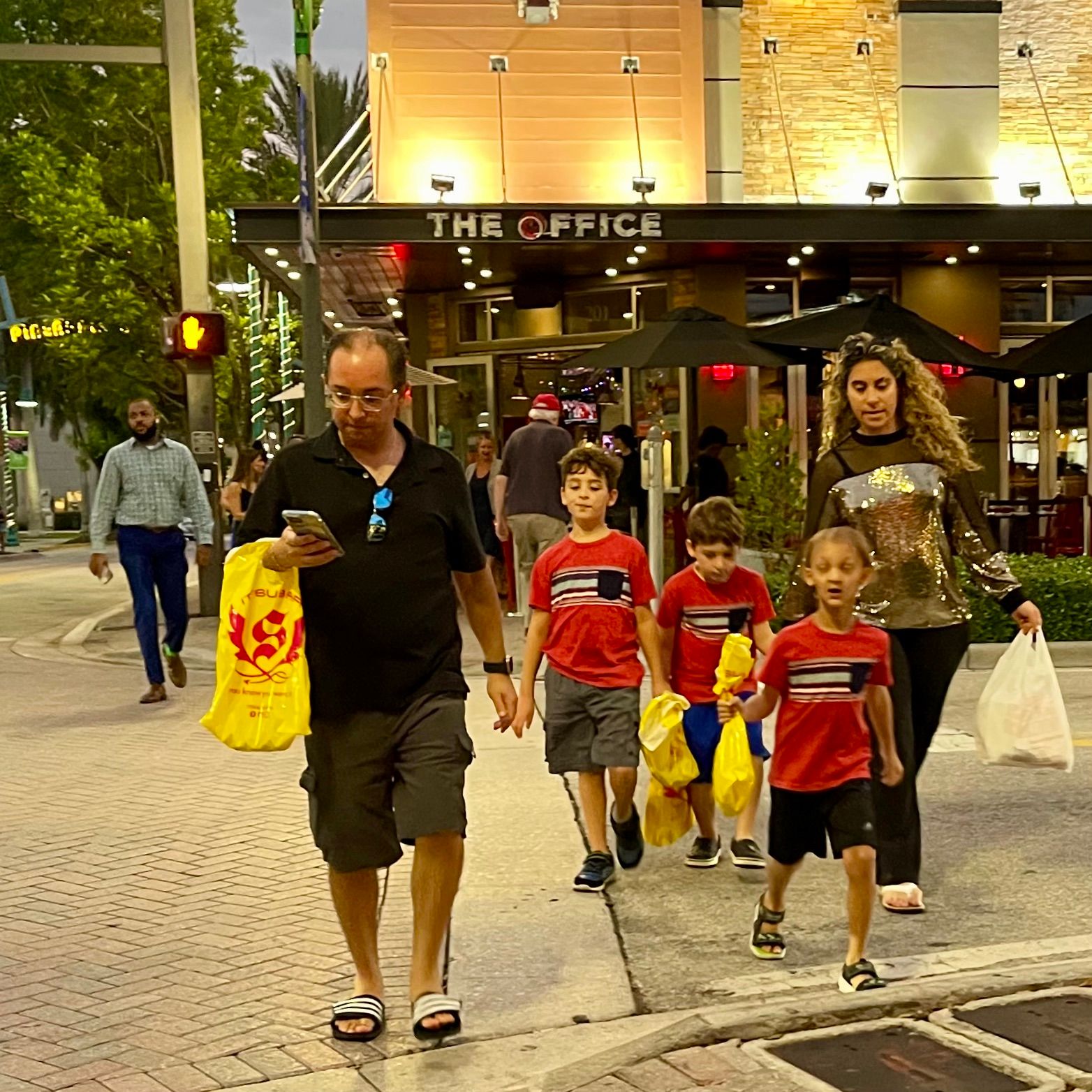


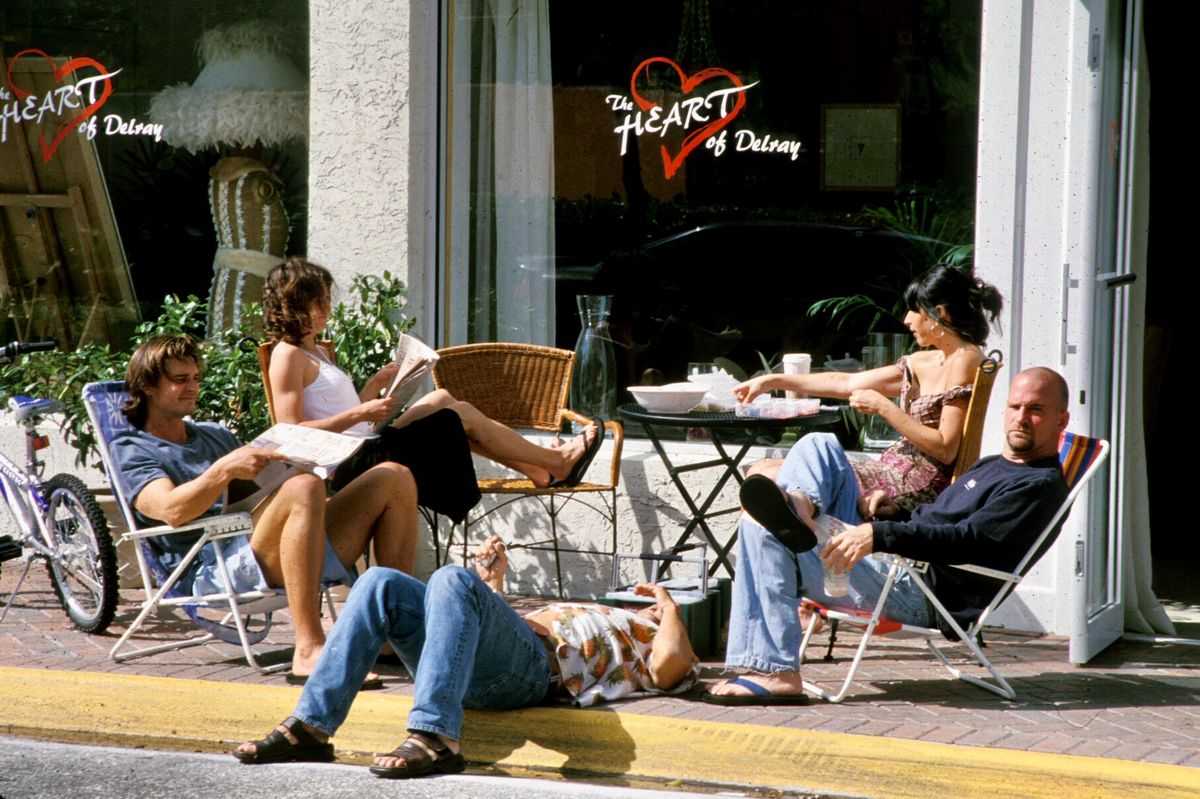
Missing section on Killer intersections
Atlantic Avenue and A1A

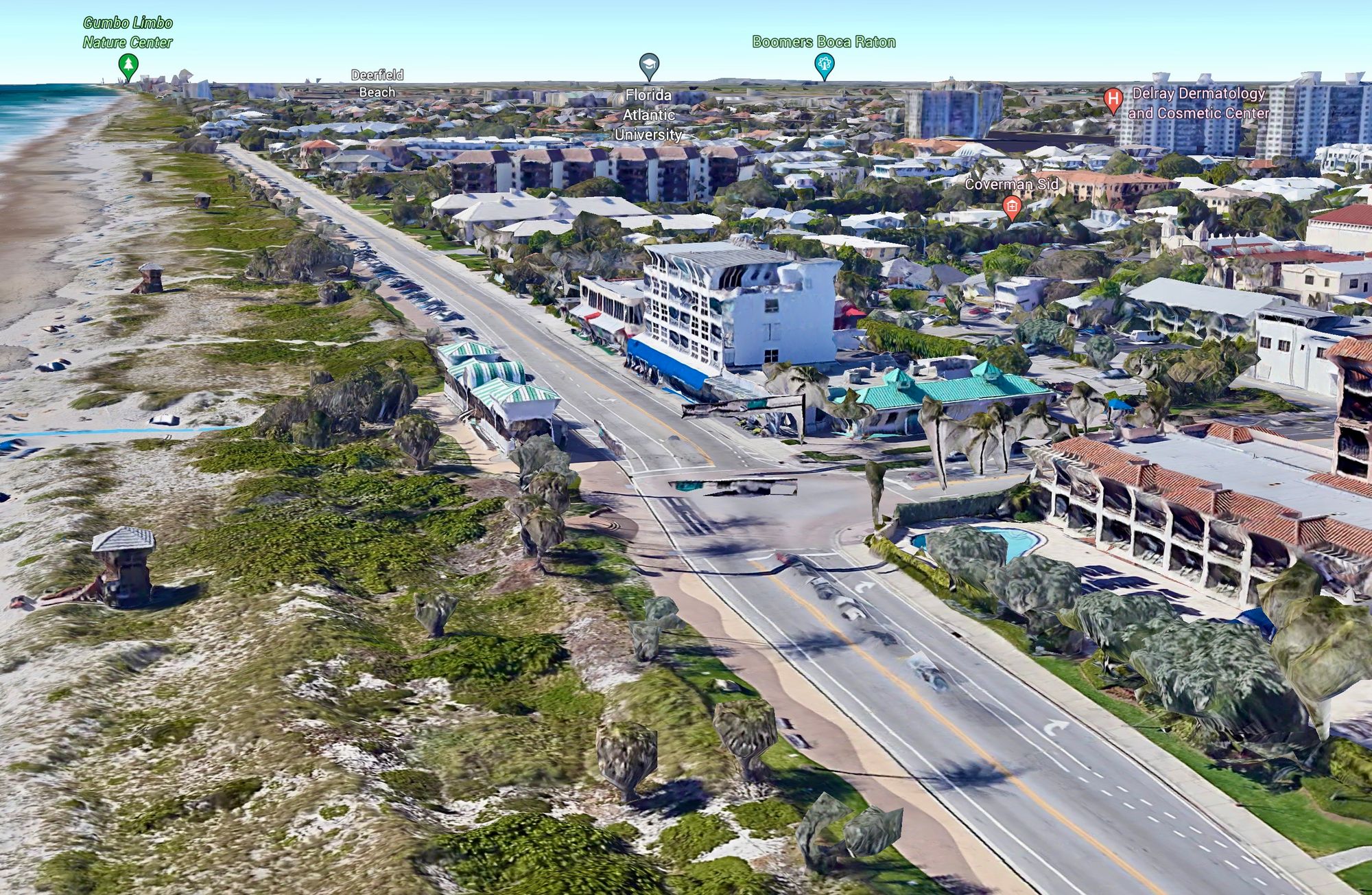
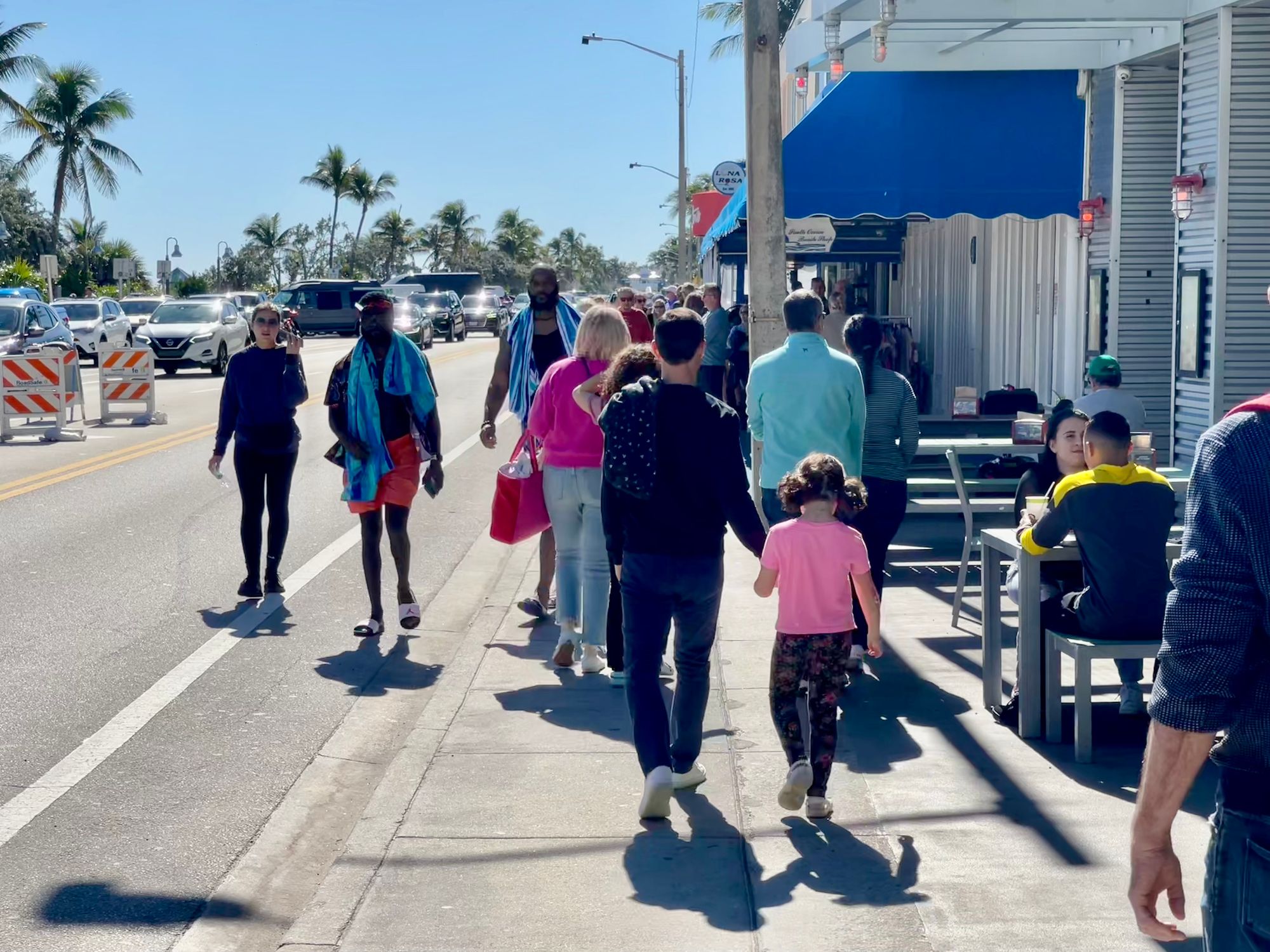
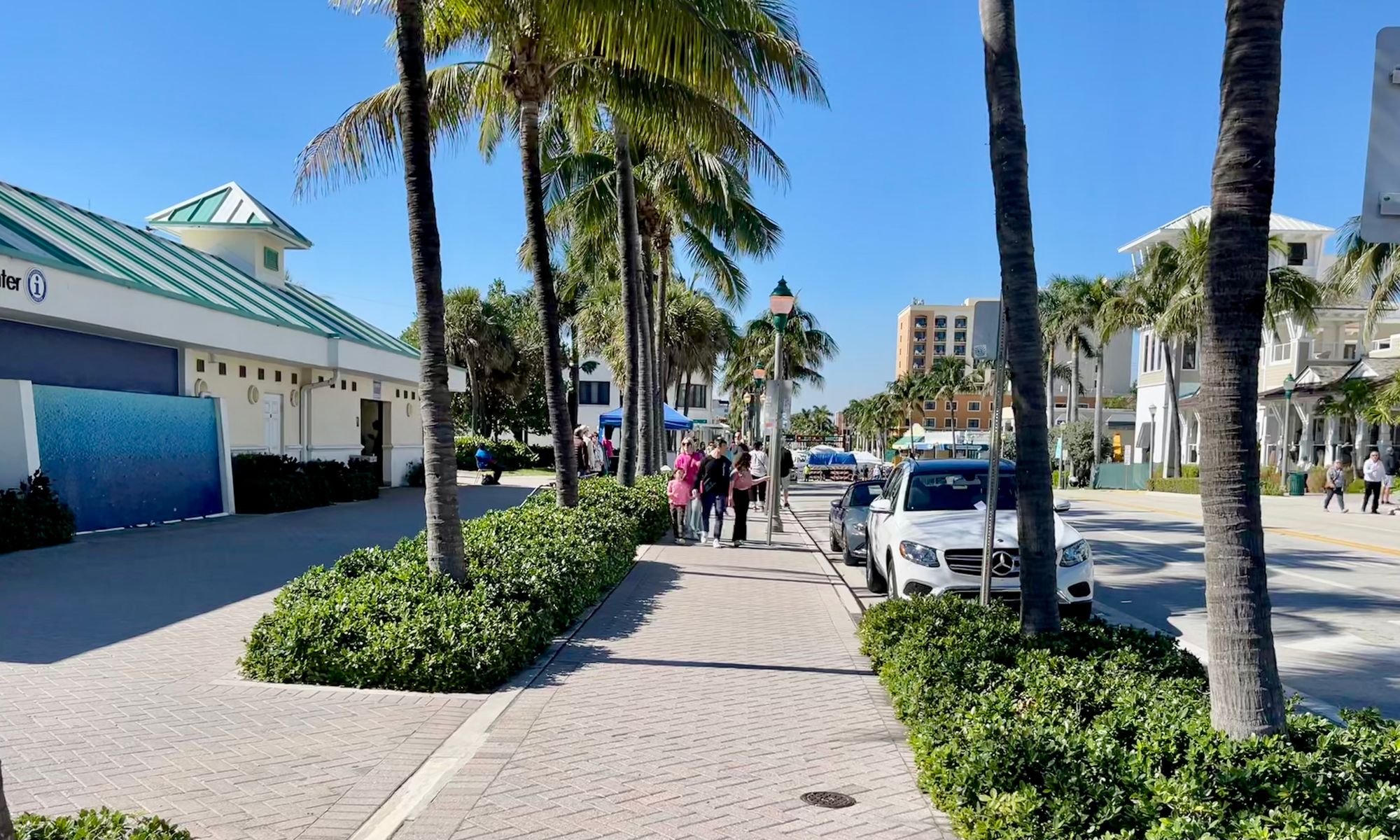
Benchmark - Lauderdale by the Sea
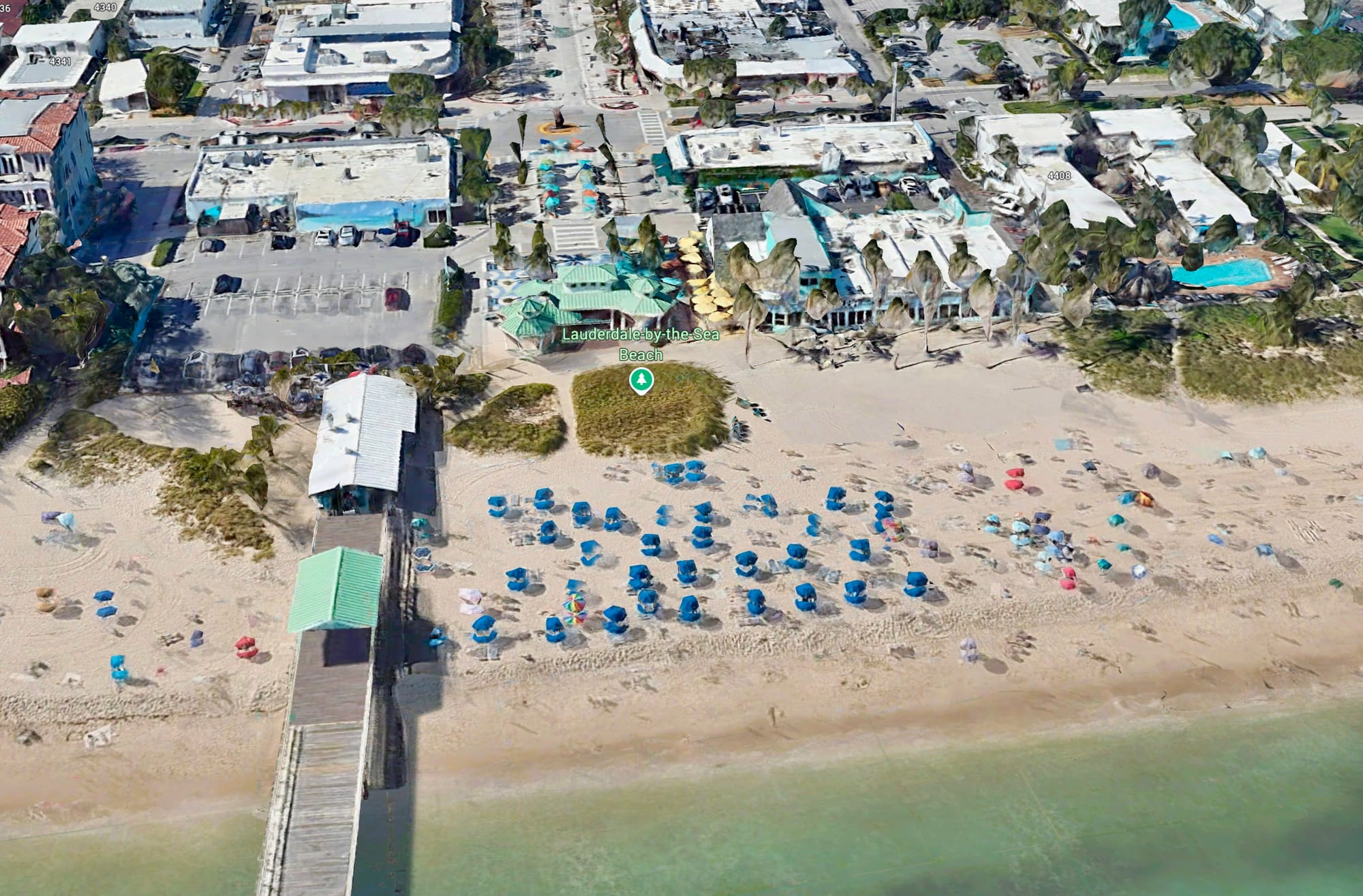
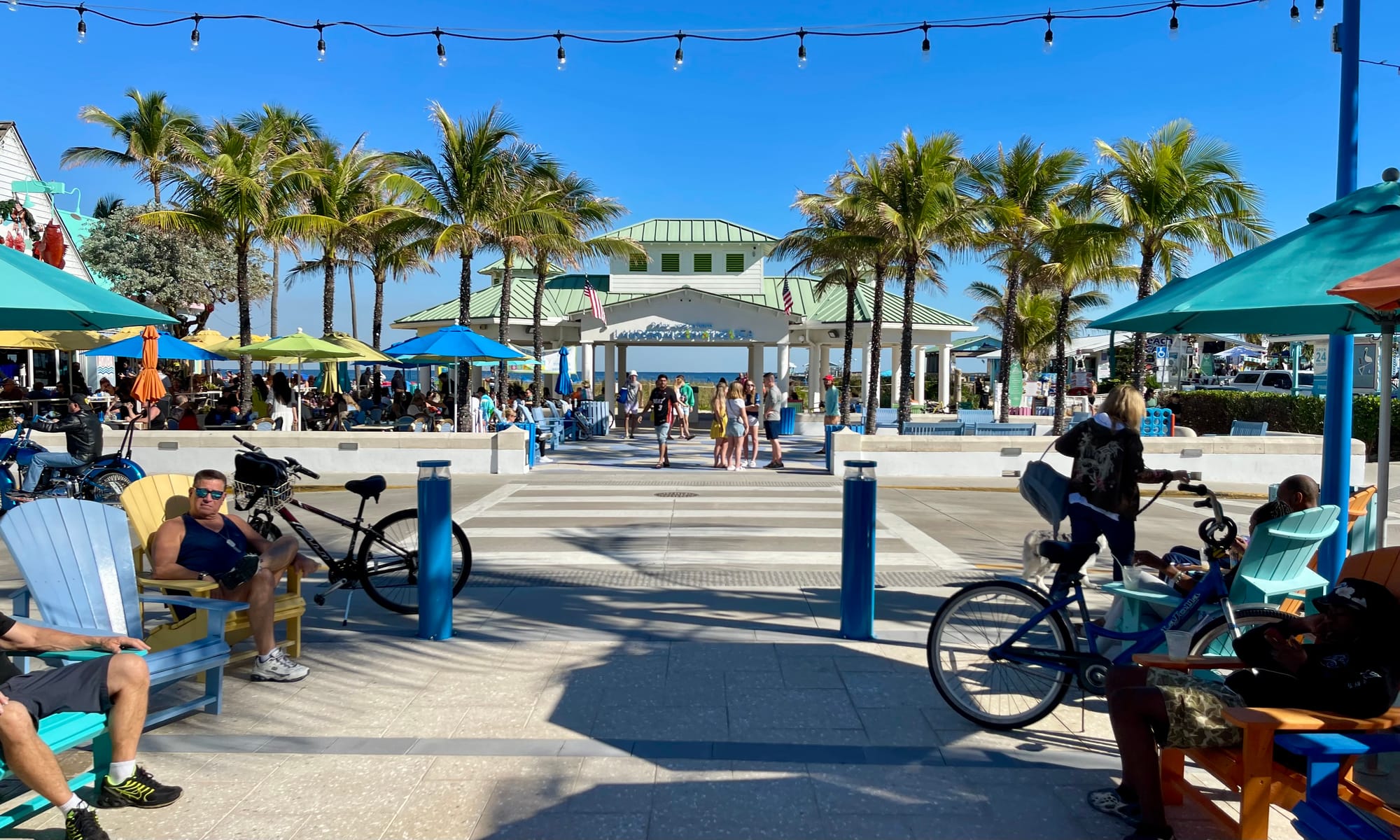

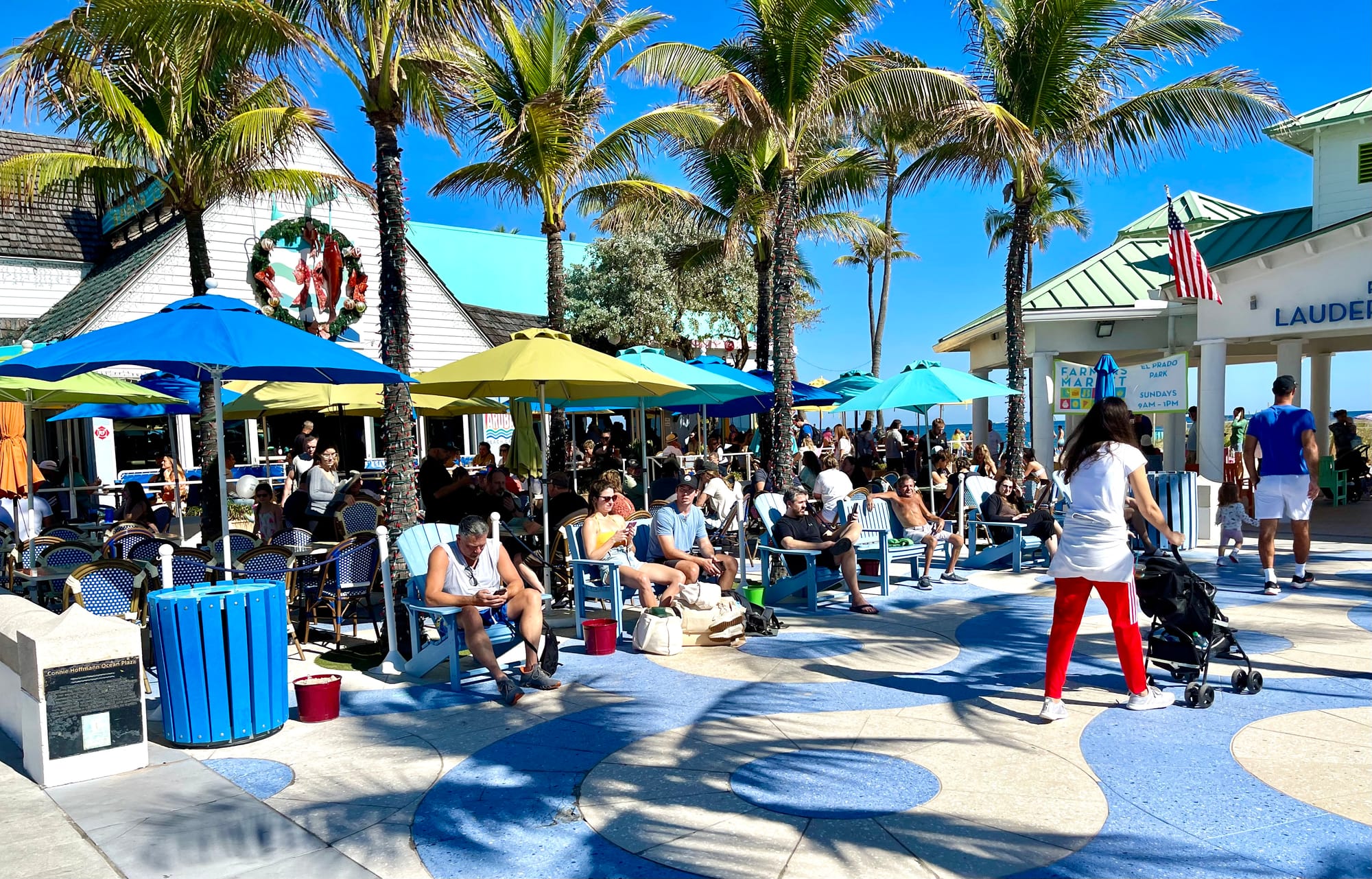
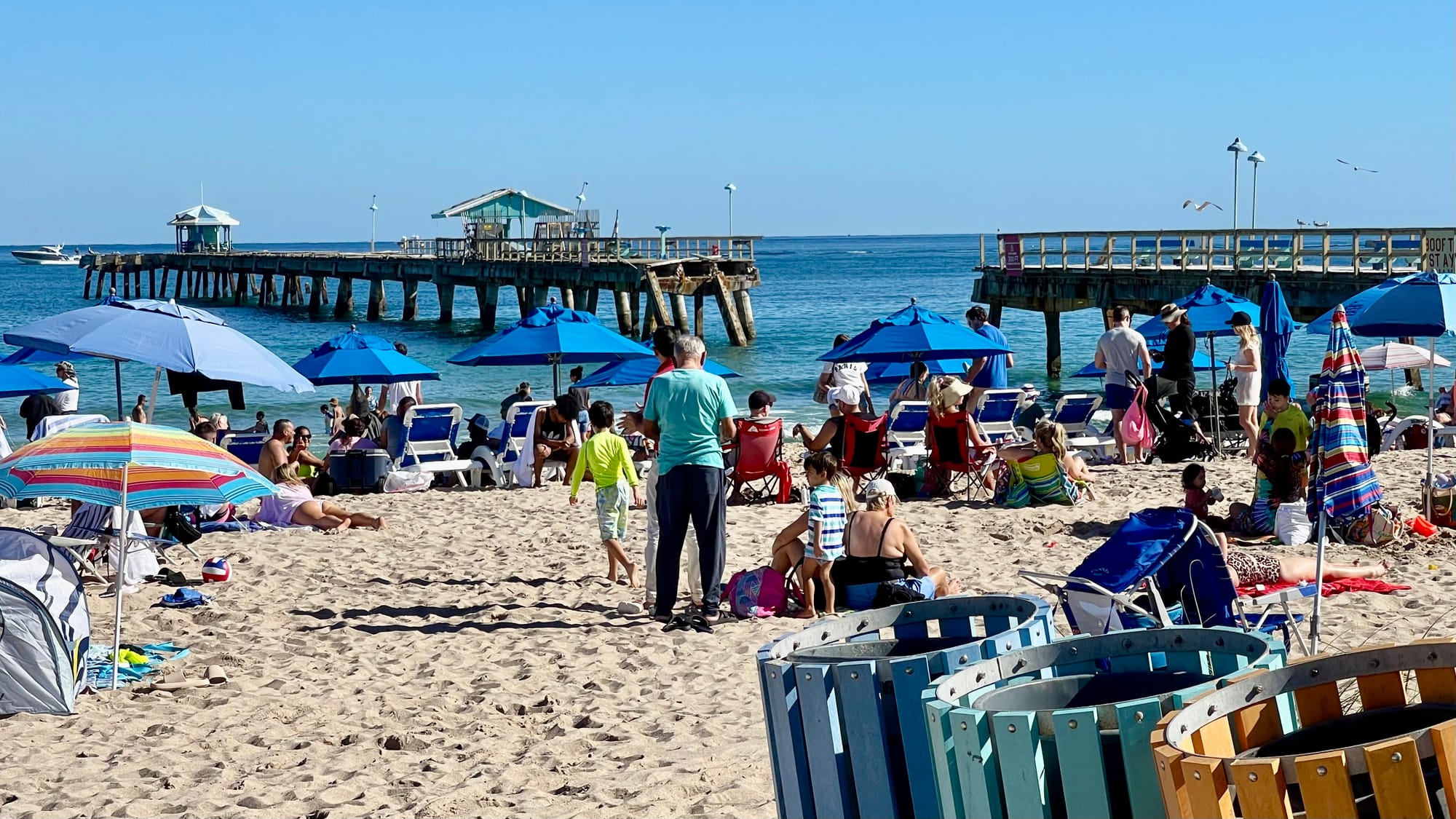
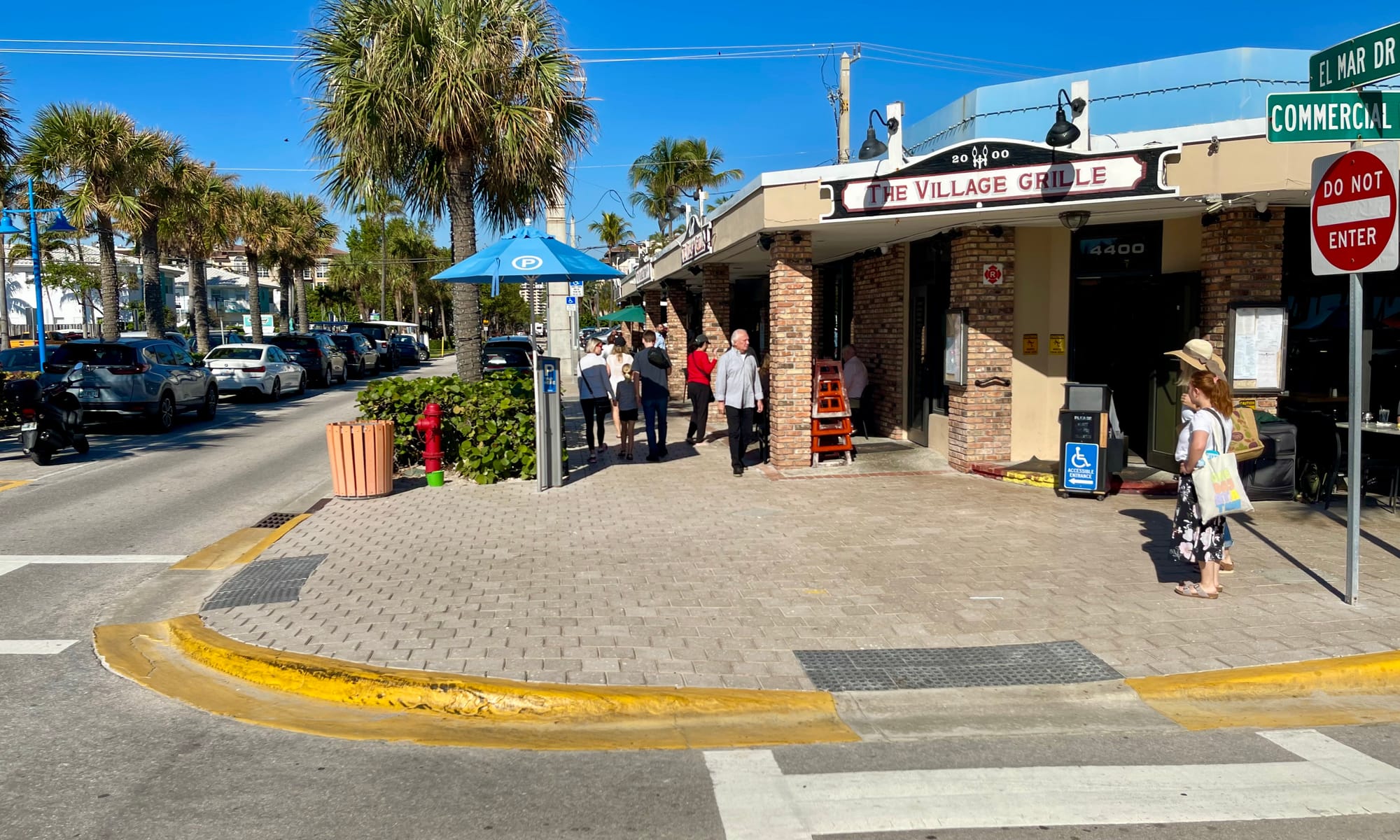
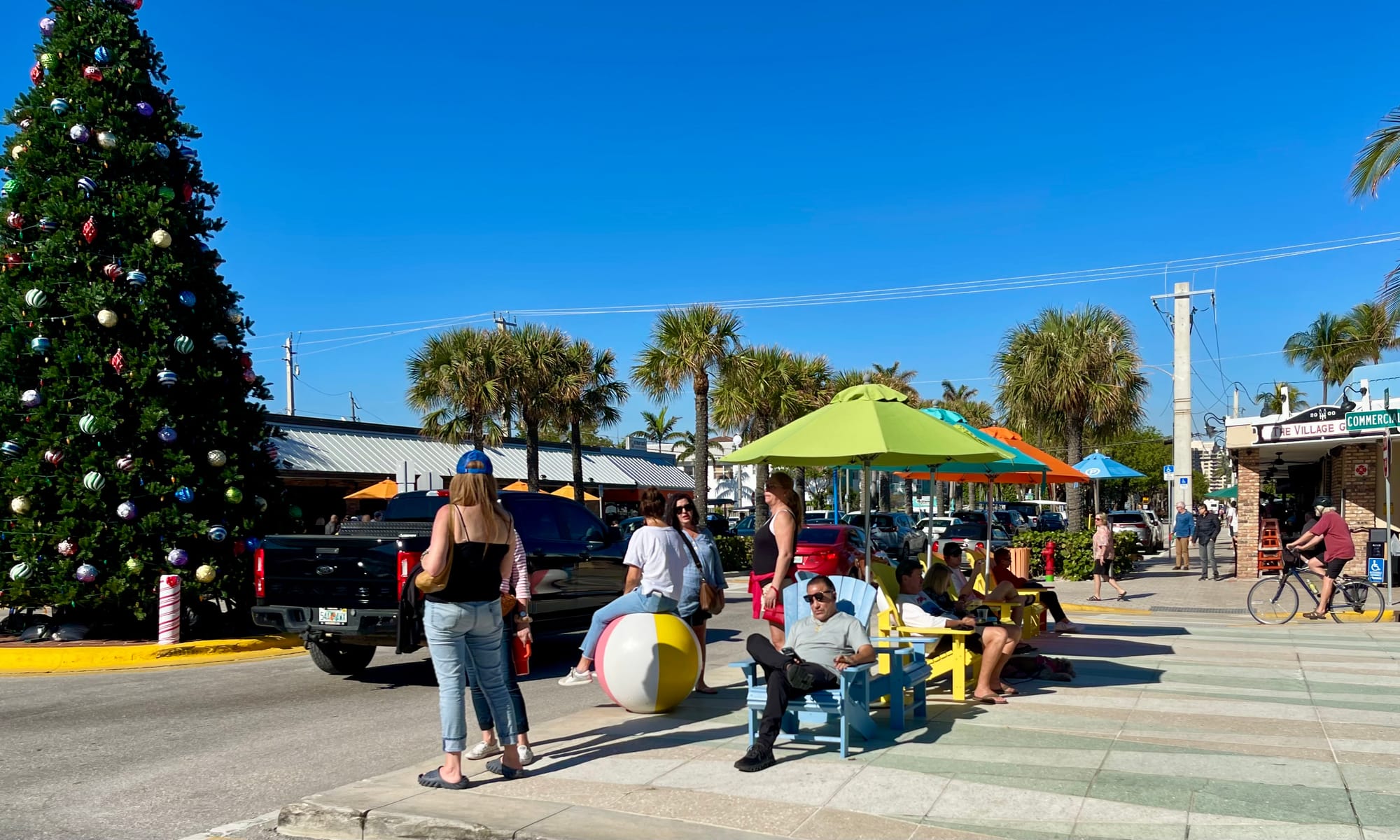
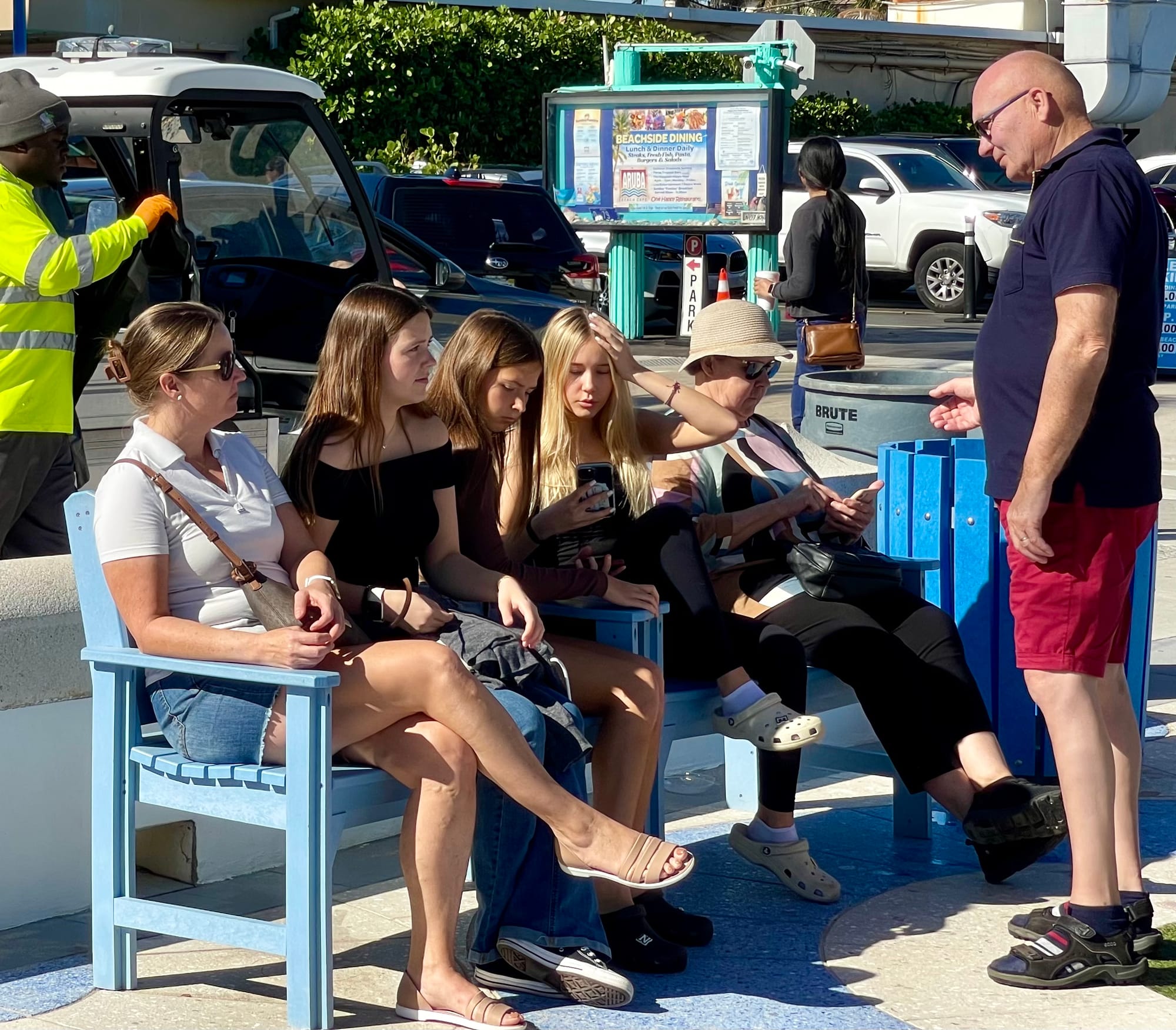
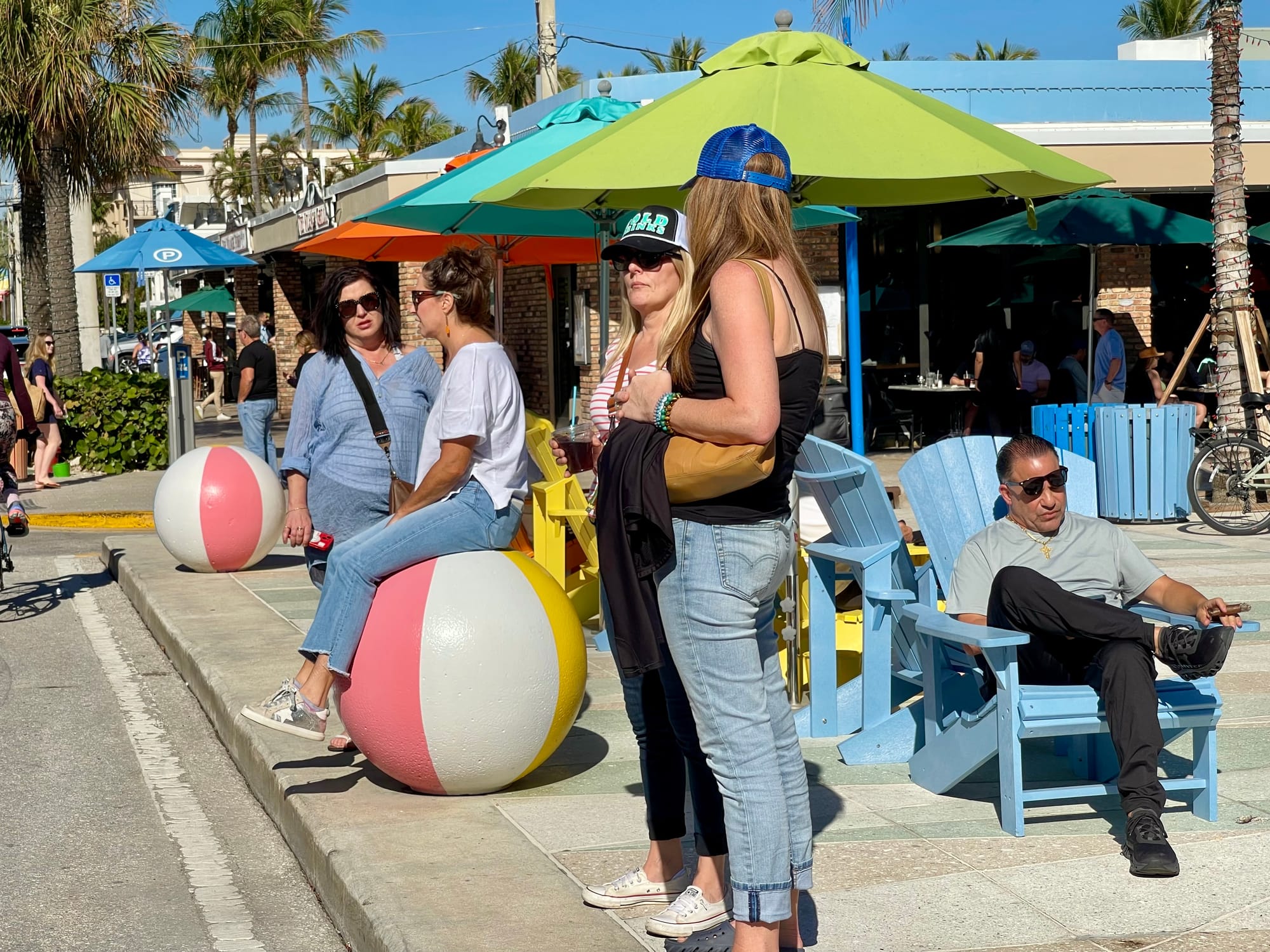
These too wide roads and intersections in the red-circled area, along with bland architecture with no sense of character, create a zone that is significantly under-performing. It gives priority to vehicles and generic buildings in the most valuable properties of town, greatly diminishing its charm and quaint "village" quality that people love.
The stretch between Federal and the Intracoastal has some of the worst sidewalks and widest streets (6 lanes) on Atlantic Avenue – a common design cutting through communities all around the US. It is also full of "modern" architecture with design that conforms to heavily traveled streets rather than to human sensibilities, lacking active sidewalks and open, engaging buildings that draw people in.
As in many cities, outside the small main street core, cars are center stage again and people are squeezed out, forced to walk on the street because of how narrow the sidewalks are. This is backwards. The residents of our cities are humans, not cars, and cities should be designed accordingly.
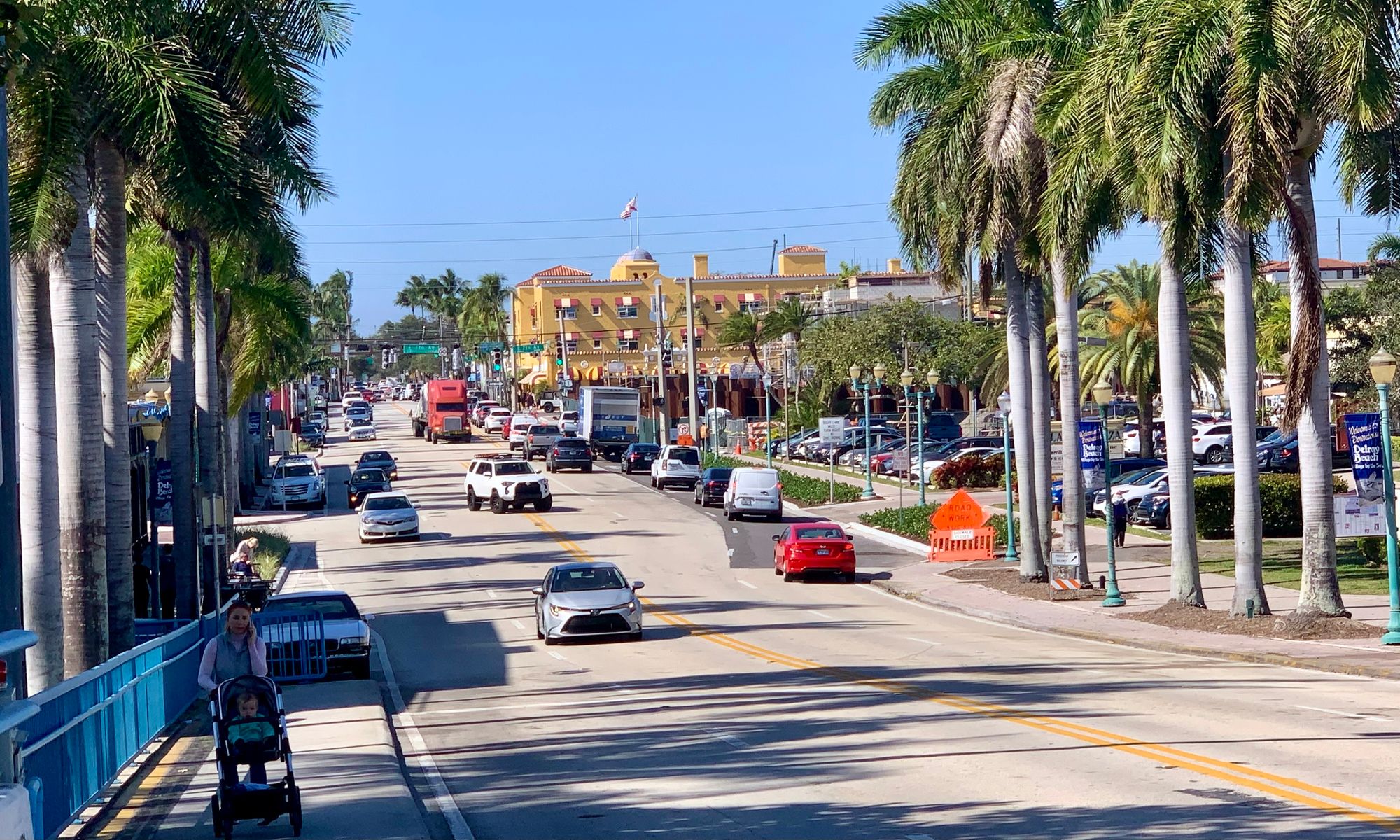
Takeaways
When we look at the streets we love and compare them to the streets where we feel stressed and uncomfortable, a clear takeaway rises to the surface. The street we love are those where people are at the forefront instead of cars. Streets that feel welcoming to pedestrian activity, that have businesses spilling onto wide sidewalks which serve to draw people in, where cars either do not travel or if they do, they do so slowly and carefully – those are the kinds of streets people enjoy spending time on. And those are the kinds of streets where community develops, where businesses thrive, and where people look happiest.
A lot of this has to do with the street design. A street that has two lanes creates a dynamic "shared space" that serves as a gathering place for everyone. When you expand it further, to a three-lane street or wider, the atmosphere changes, and almost none of the social or economic activity that makes a place come alive can occur. Four lanes or more with added parking creates an even stronger barrier to connecting; there is too much separation between the sidewalks and too much stress and chaos caused by the cars.
We need to stop designing for cars speeding through a place and start designing for people lingering in and trying to enjoy the place. In order to create thriving and enjoyable cities, we need to take back space from cars and give it to people and businesses, and we need to activate public spaces to be more interesting and vibrant.

Recommendations for Intersection Revitalization
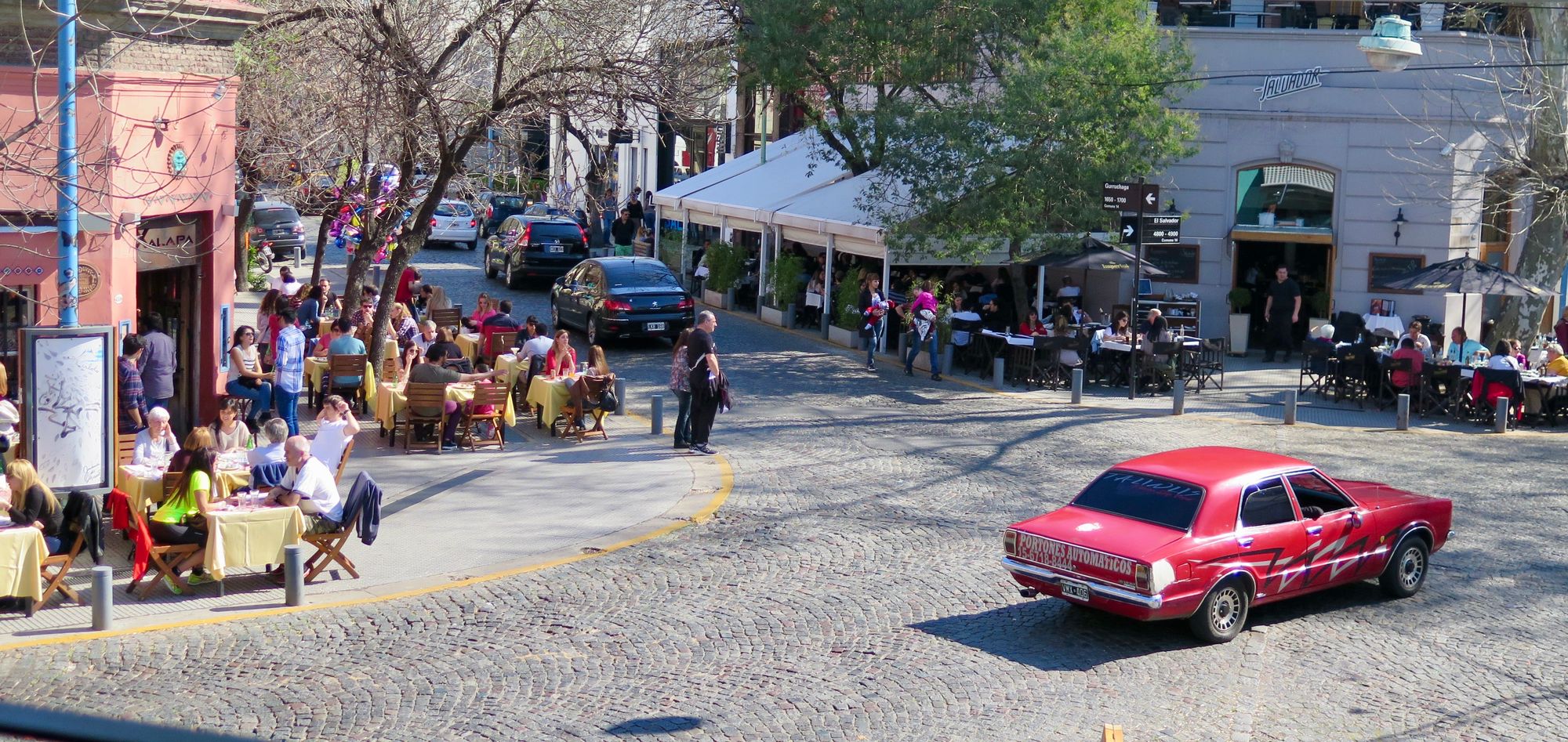
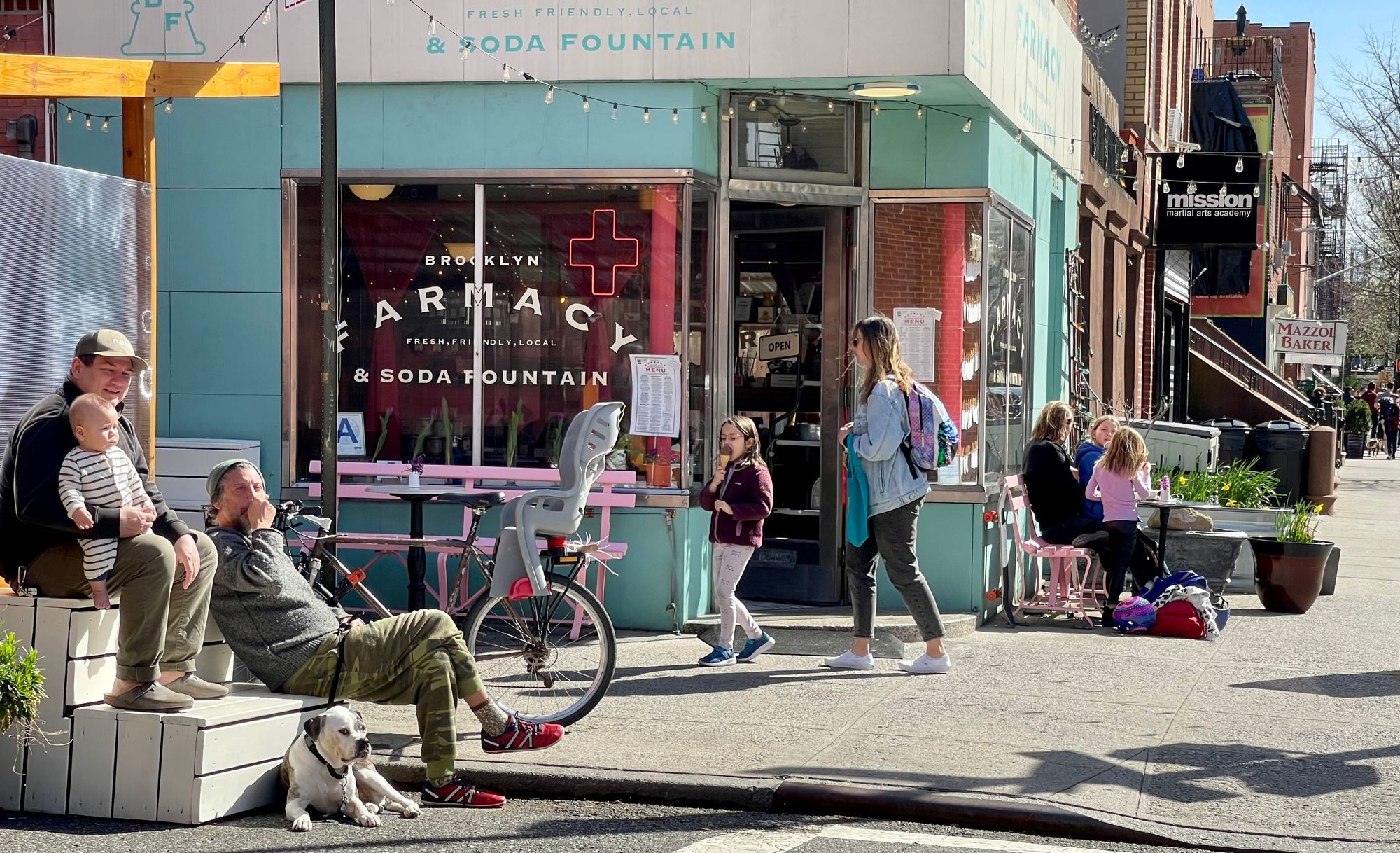
If Delray and other towns/cities in a similar position want to improve the experience of residents and visitors, transforming intersections into gateway has to become a priority. Narrowing the main street to two lanes, eliminating turning lanes, while building out extended sidewalks at crossroads can bring life back to a street and a community. Reducing the number of lanes of traffic makes space for vibrant intersections with important uses on all corners. We can move away from crossings being dominated by cars and reconnect them to social and commercial life by making the corners a pleasant place to be.
These corners can stretch back into the surrounding community in all directions, leading people to valuable assets there and thus linking those places to the main street and downtown. This would also help to make neighborhoods on both sides become more interesting as places to explore, expanding a town's offerings and making it a true destination.
Approaches to Follow: Streets as Shared Spaces & Mental Speed Bumps
Both David Engwicht and Hans Monderman have/had radically different ways of dealing with the same problem – slowing traffic down. In order to do so, it is necessary to create a place that people want to be. This means that the public realm needs to be changed significantly. The street could and should benefit the local economy in cities and neighborhoods, not be convenient for cars to speed through.

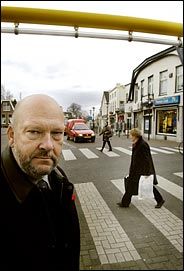
David Engwicht (left) takes his case for people-oriented communities to the streets. Hans Monderman (1945-2008) reinvented intersections for the safety of all
These two men are polar opposites in terms of personality and approach...but both seek the same outcomes, and together, they show how different approaches can deliver similar outcomes.
David Engwicht, from Brisbane, Australia, demonstrated how changes could be made quickly by creating a very different environment. He relies on a concept called Mental Speed Bumps, where people and drivers suddenly get out of their stupor and recognize that where they are deserves some attention. Engwicht is a social innovatorand a significant international leader of efforts to reduce the negative impacts of motor vehicle traffic on cities and towns...he is considered one of the fathers of traffic calming and the inventor of the Walking School Bus, Street Reclaiming techniques.
Hans Monderman was a totally data-driven, seasoned traffic engineer from the Netherlands. Based on years of experience and studies, he arrived at the simple idea that by removing all signals and stop signs from an intersection and modifying the roadway to alert people in cars, on bikes, and on foot to pay attention to their surroundings, intersections would become safe for pedestrians as well as vehicles. His goal was to create a setting where eye contact between pedestrians and vehicles was possible and necessary, so they would negotiate as to who would proceed.
Hans Monderman "If you want people to behave like they are in a village...build a village."

A City That Got the Intersection Right and then Lost it
A perfect example of a corner/intersection revitalization can be found in New Haven. In what was once a derelict part of downtown, locals have managed to achieve a truly massive change. Initially, it was a transformation of one corner on Chapel Street, which then spread to College Street. There, it picked up momentum when the City and Yale University took out one lane of traffic, creating a sidewalk more than twice its original size.
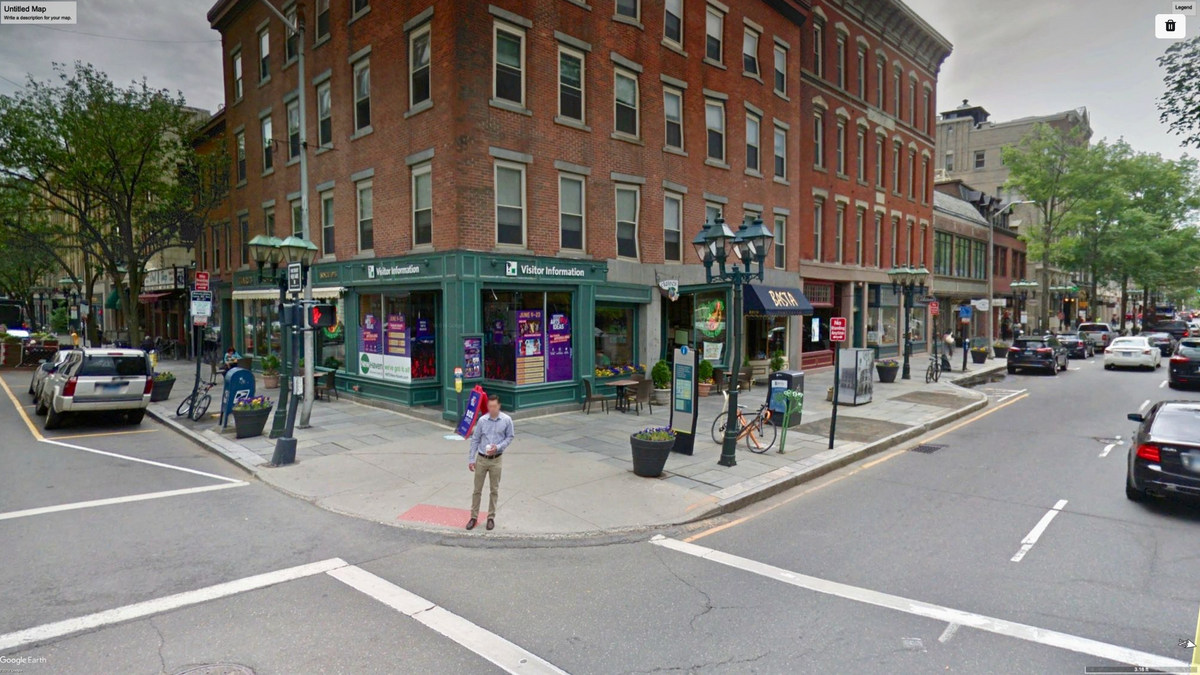
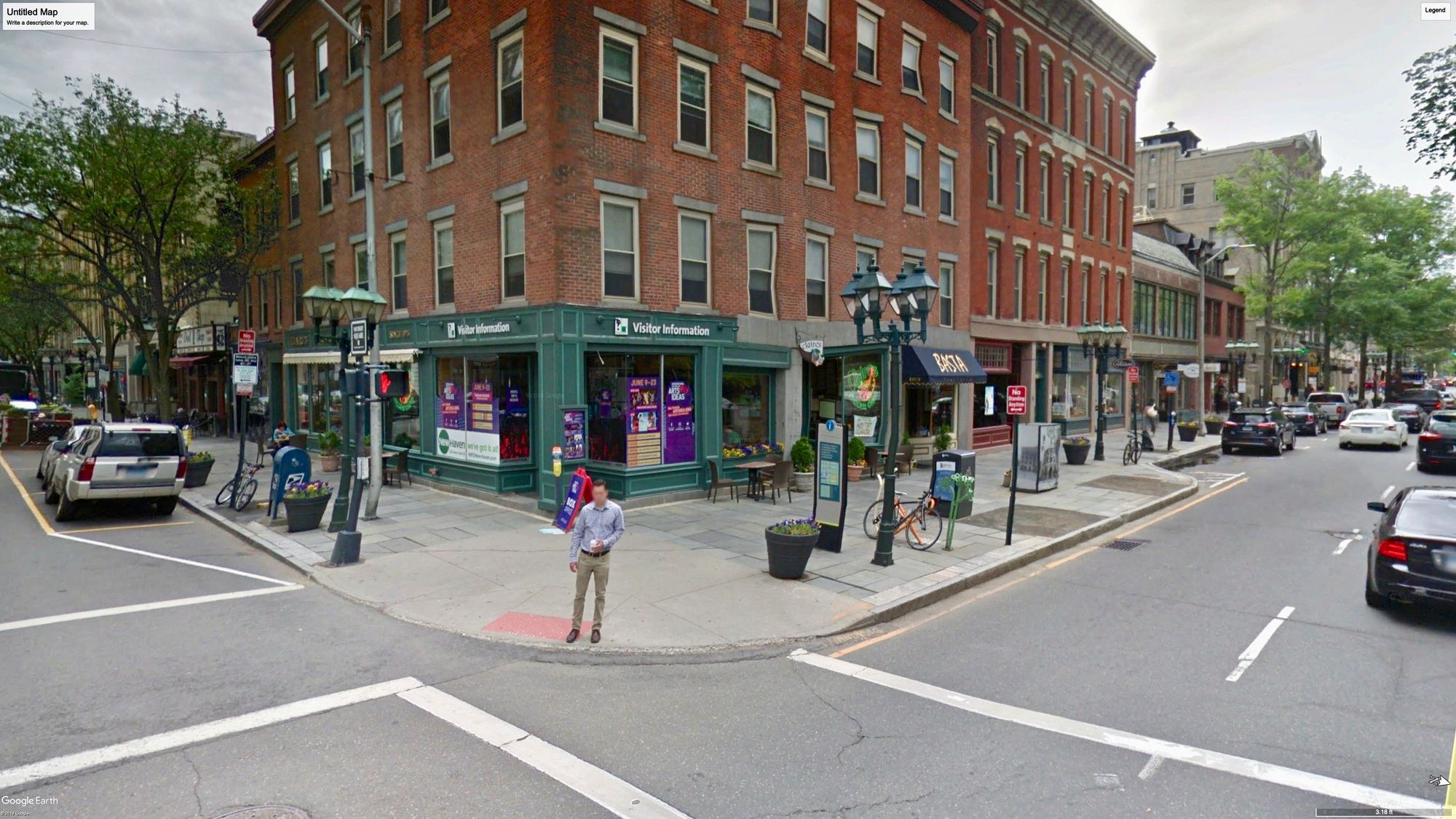
Chapel Street is on the right and College Street is on the left
This New Haven intersection, which created a revolutionary transformation in one of the city's main neighborhoods, has emerged as a key example that others can be modeled after. It demonstrates how intersections in cities should be treated as gateways that can also spread to include mid-block attractions and ultimately entire blocks.
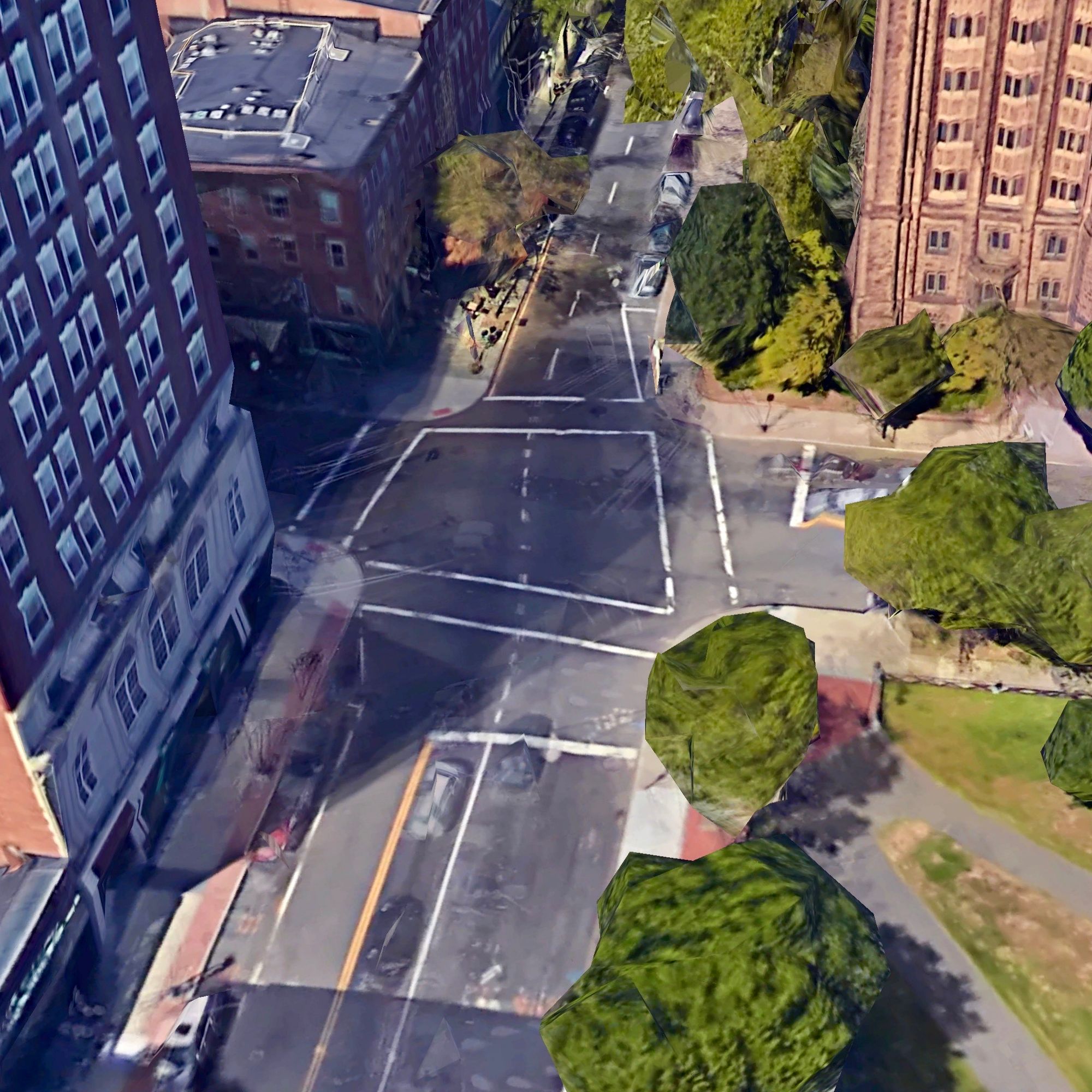
Chapel Street leading up to College Street, where it narrows significantly
It all started with the corner, and now the whole area is revitalized and a beloved neighborhood. This example can be replicated in so many places to bring them back to life.
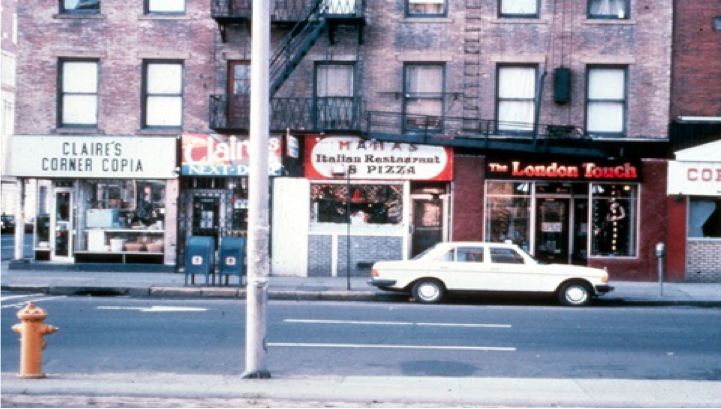
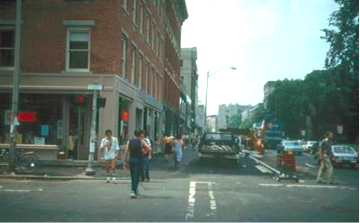
Before
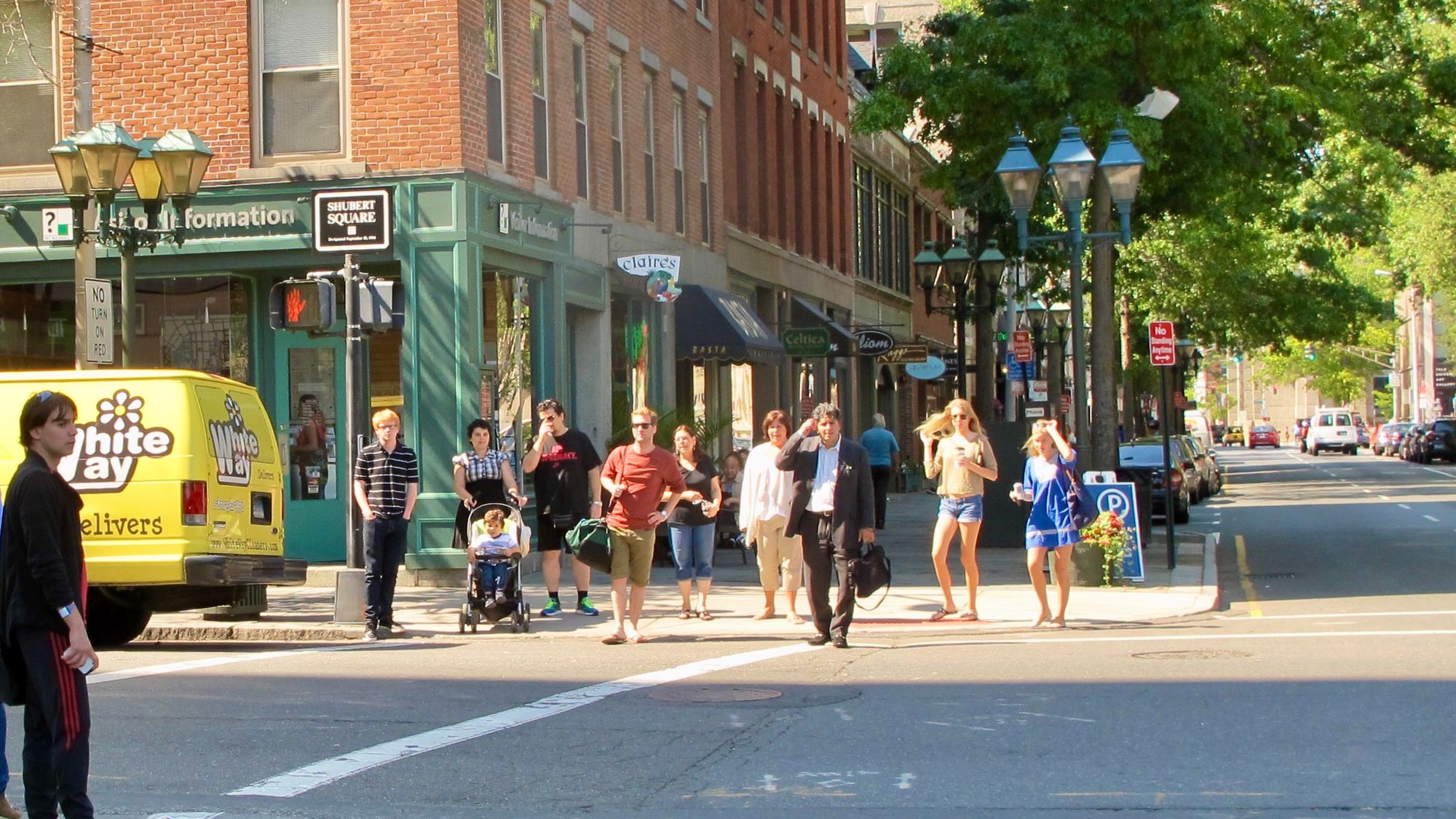
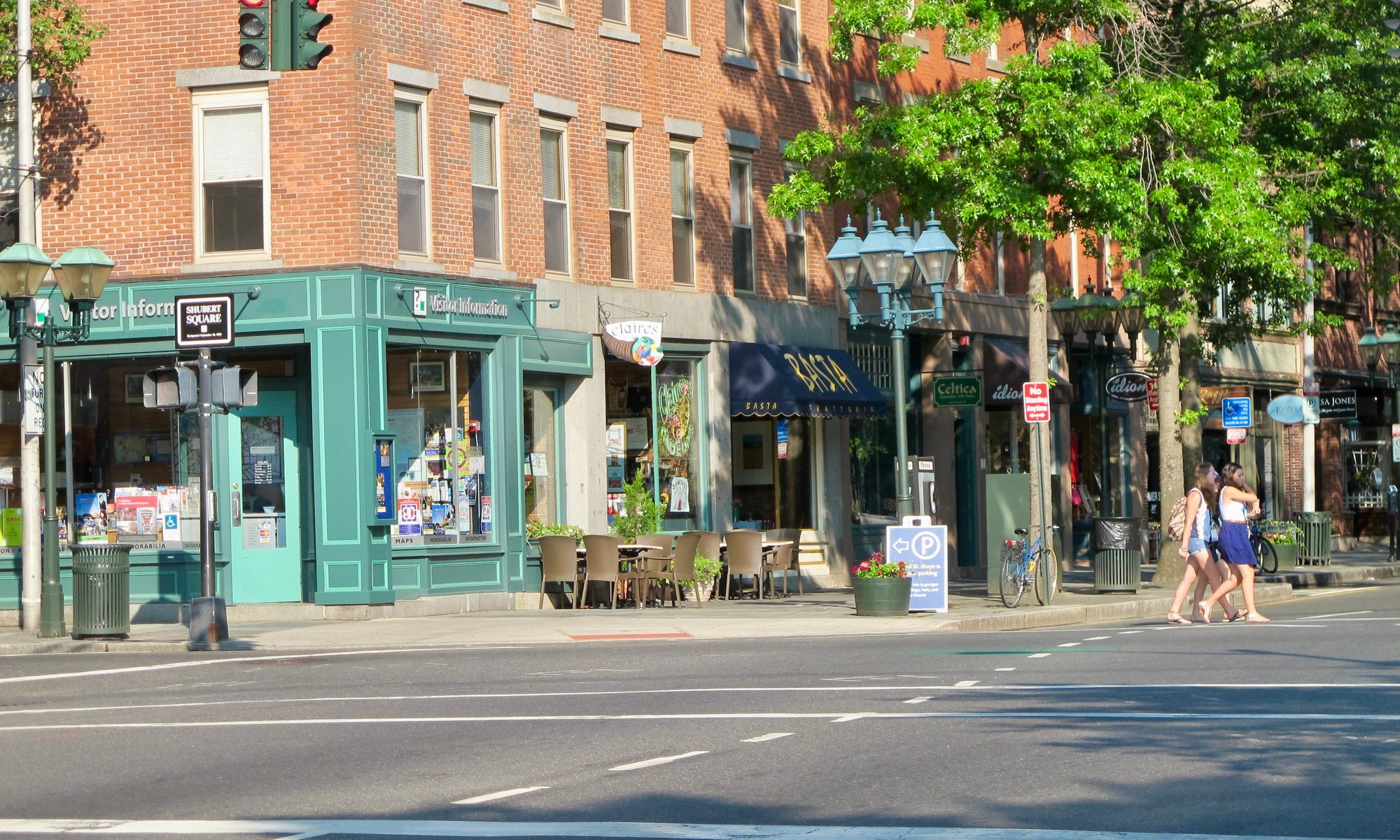
After
Other Resources for Intersection Revitalization

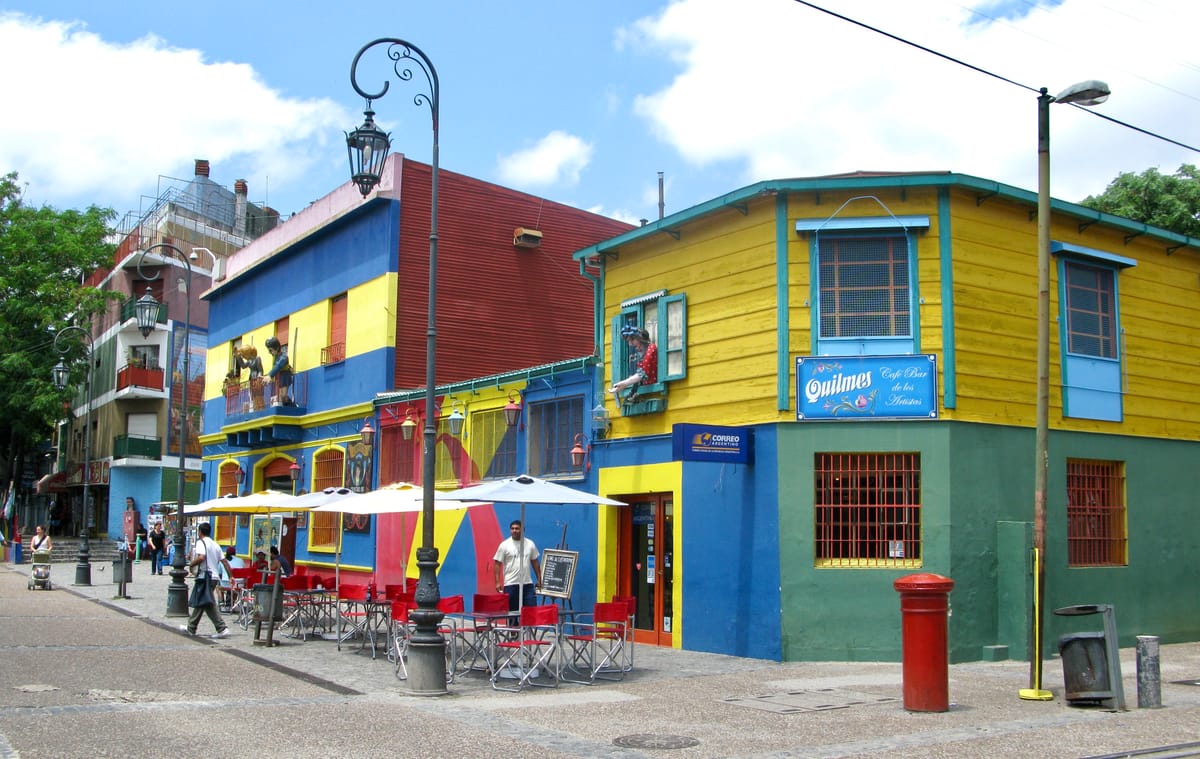
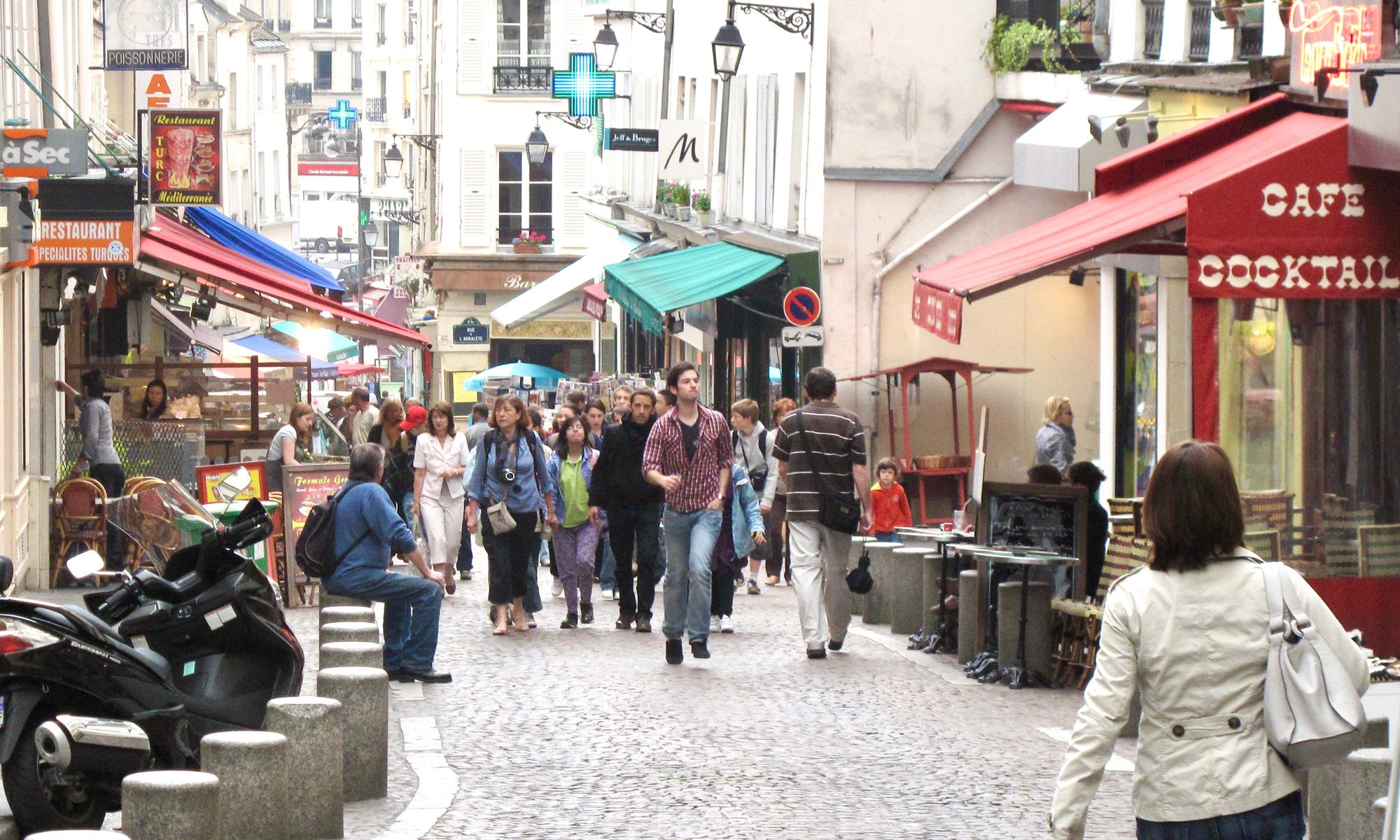
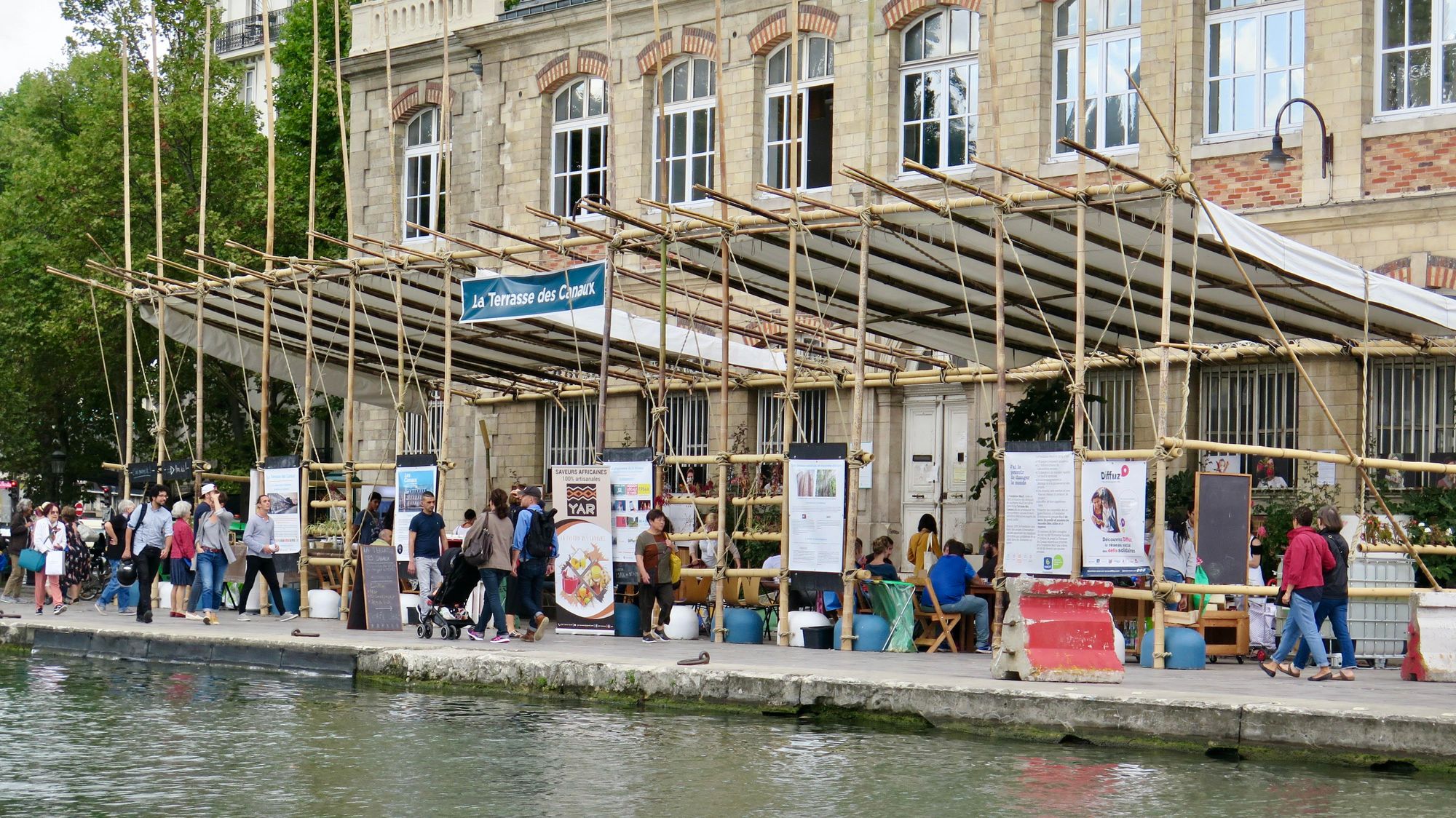
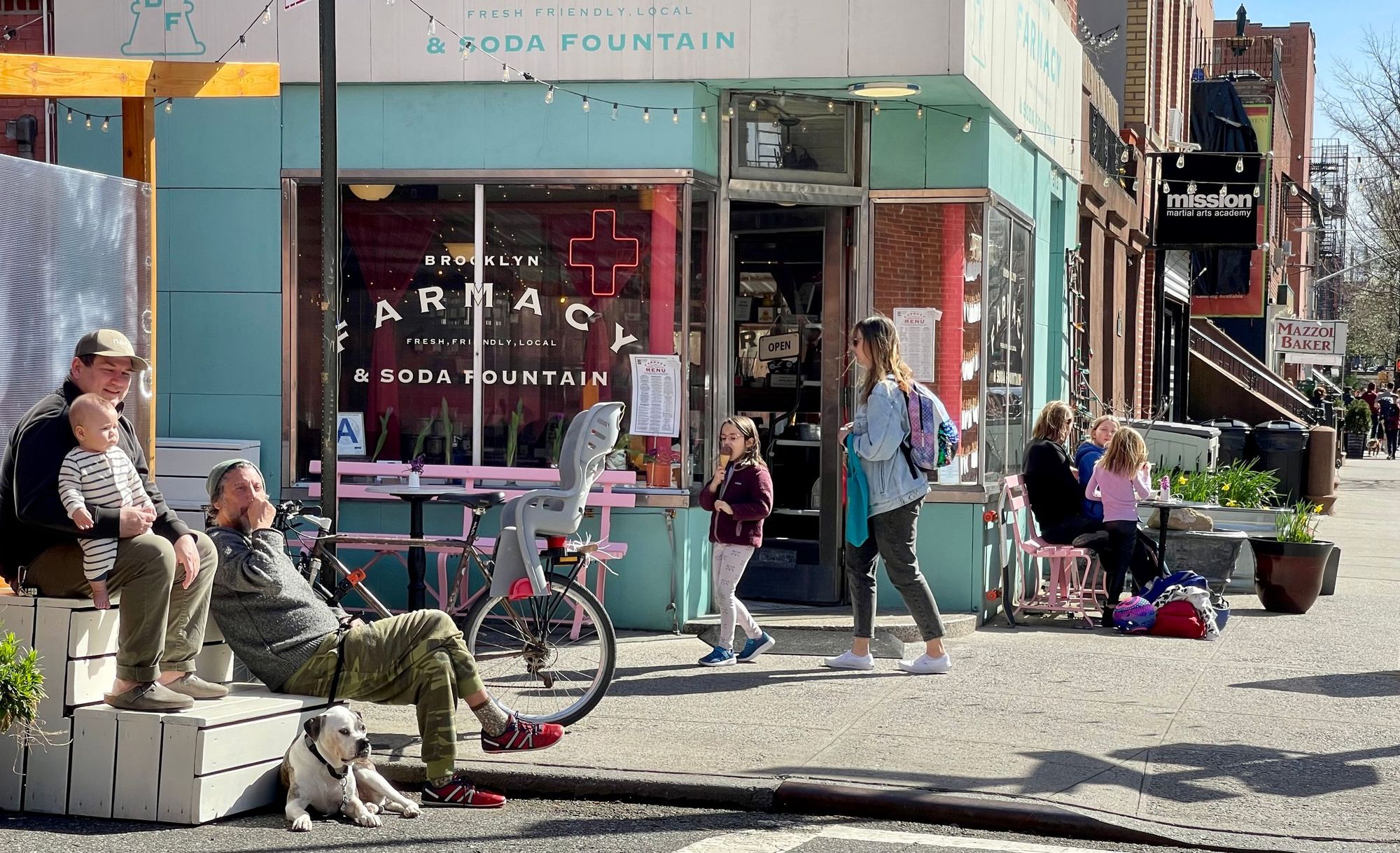
Further Reading About Delray
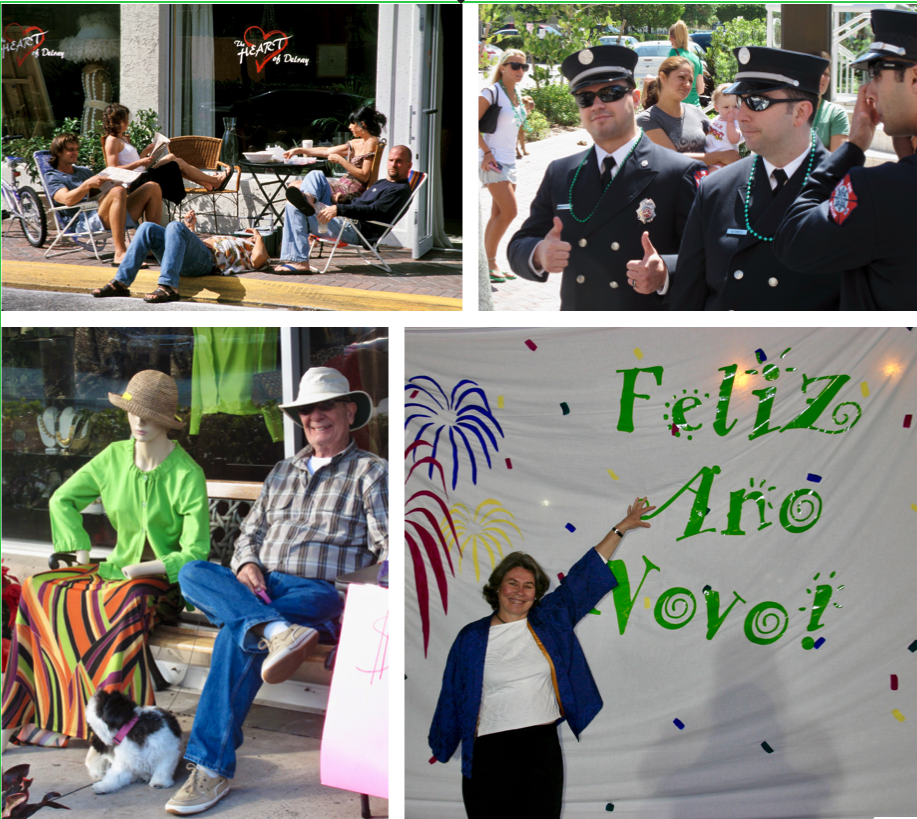
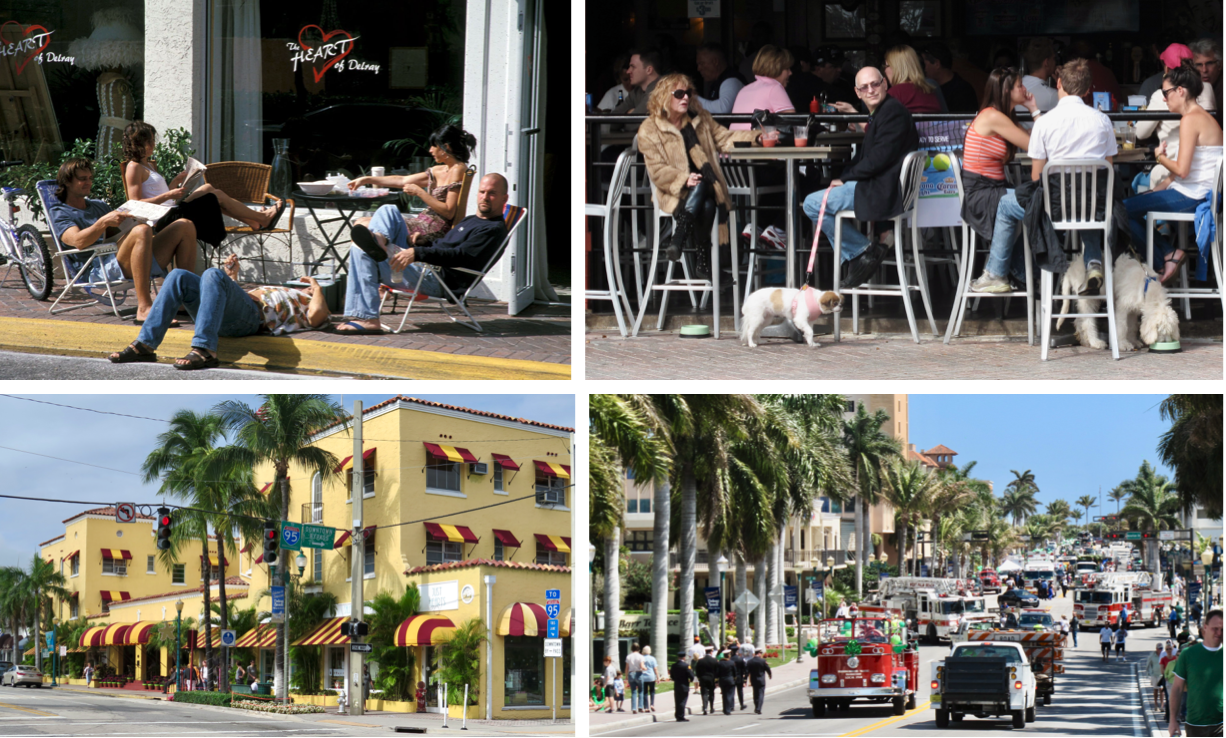
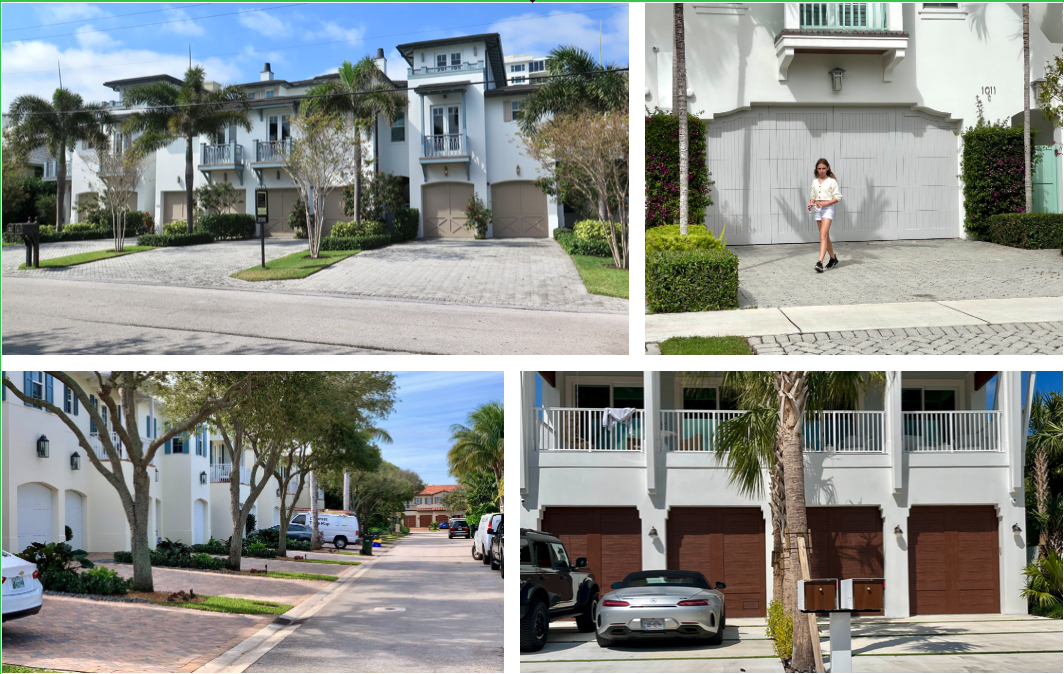
Who We Are
